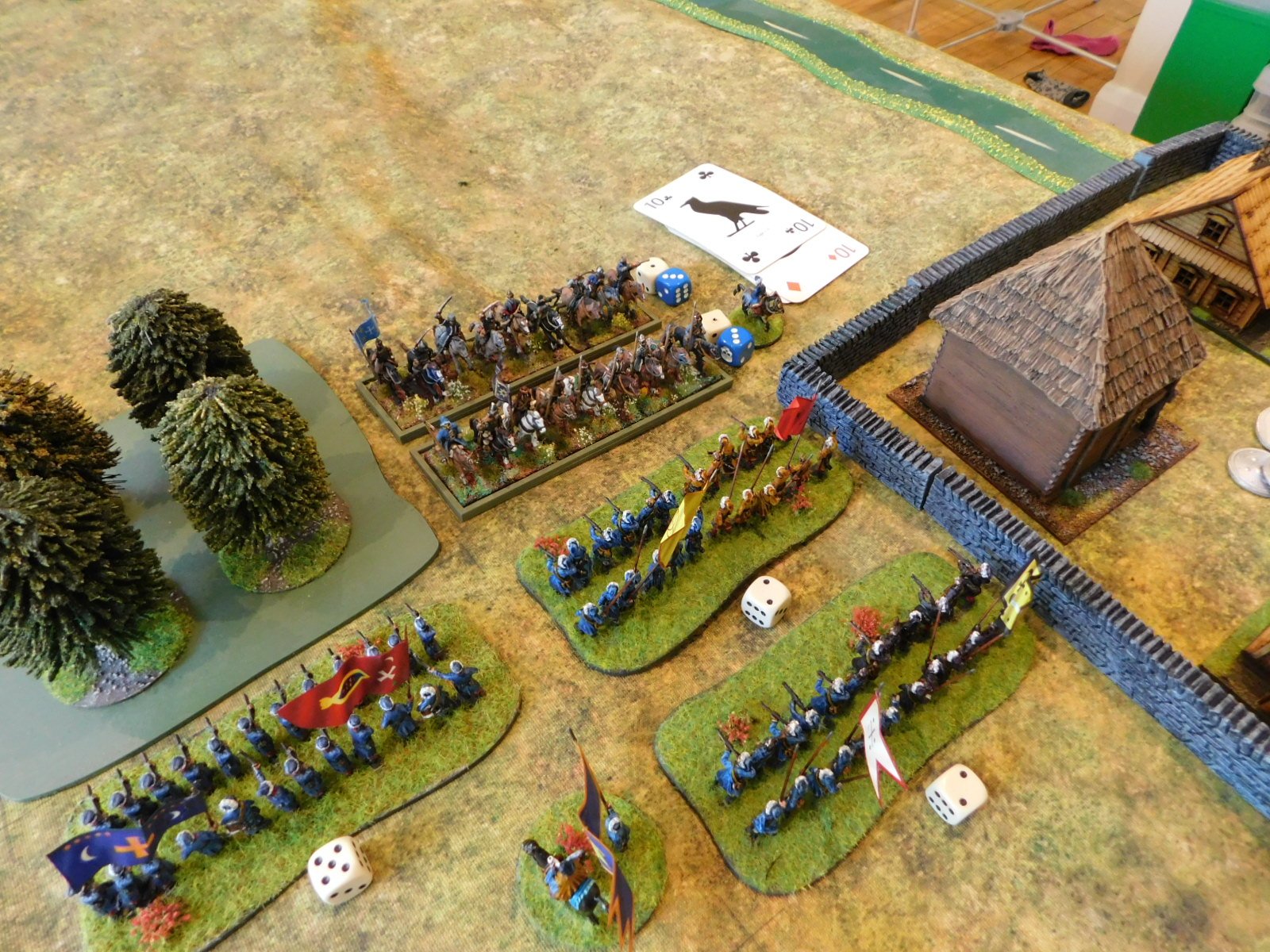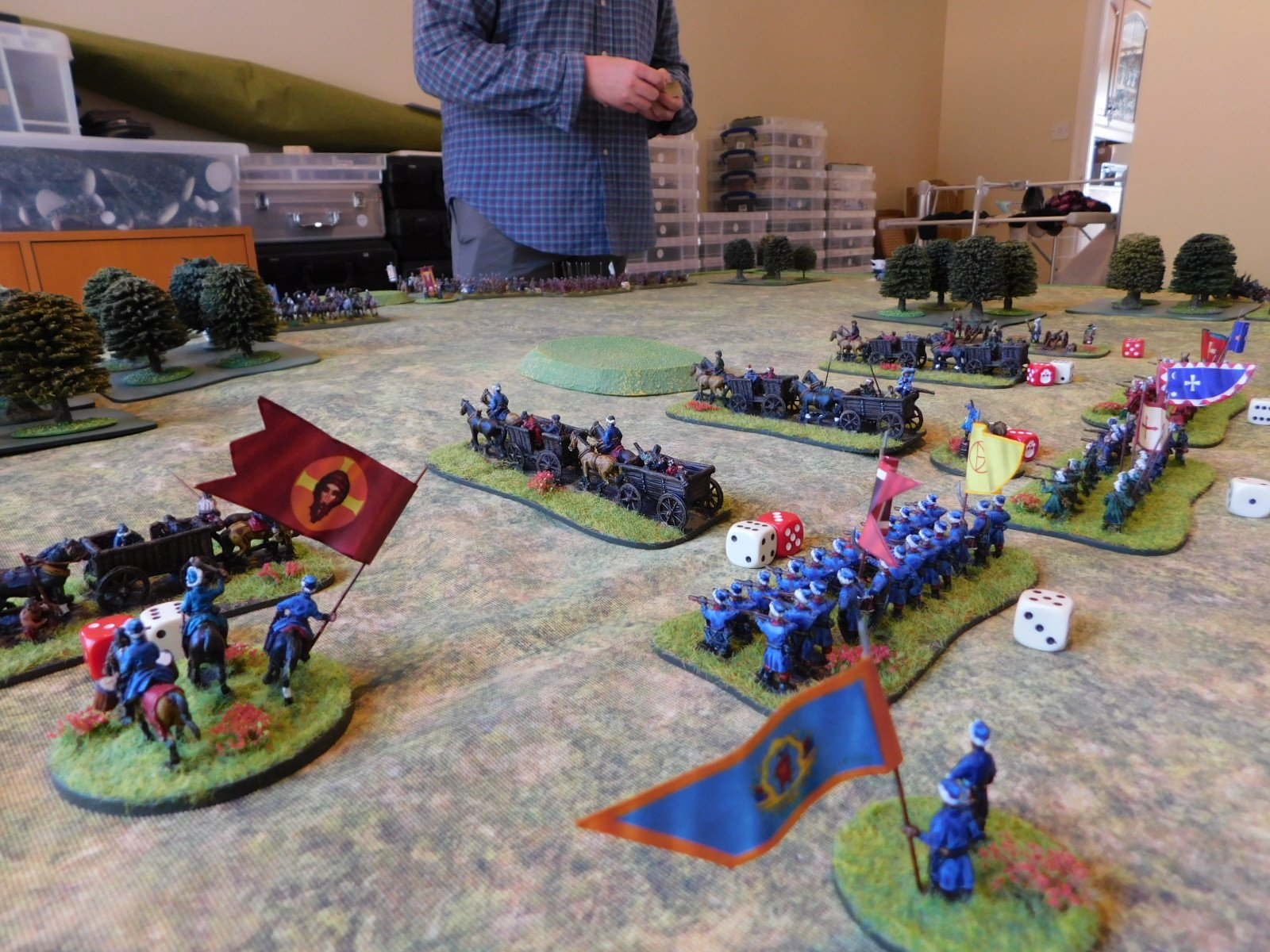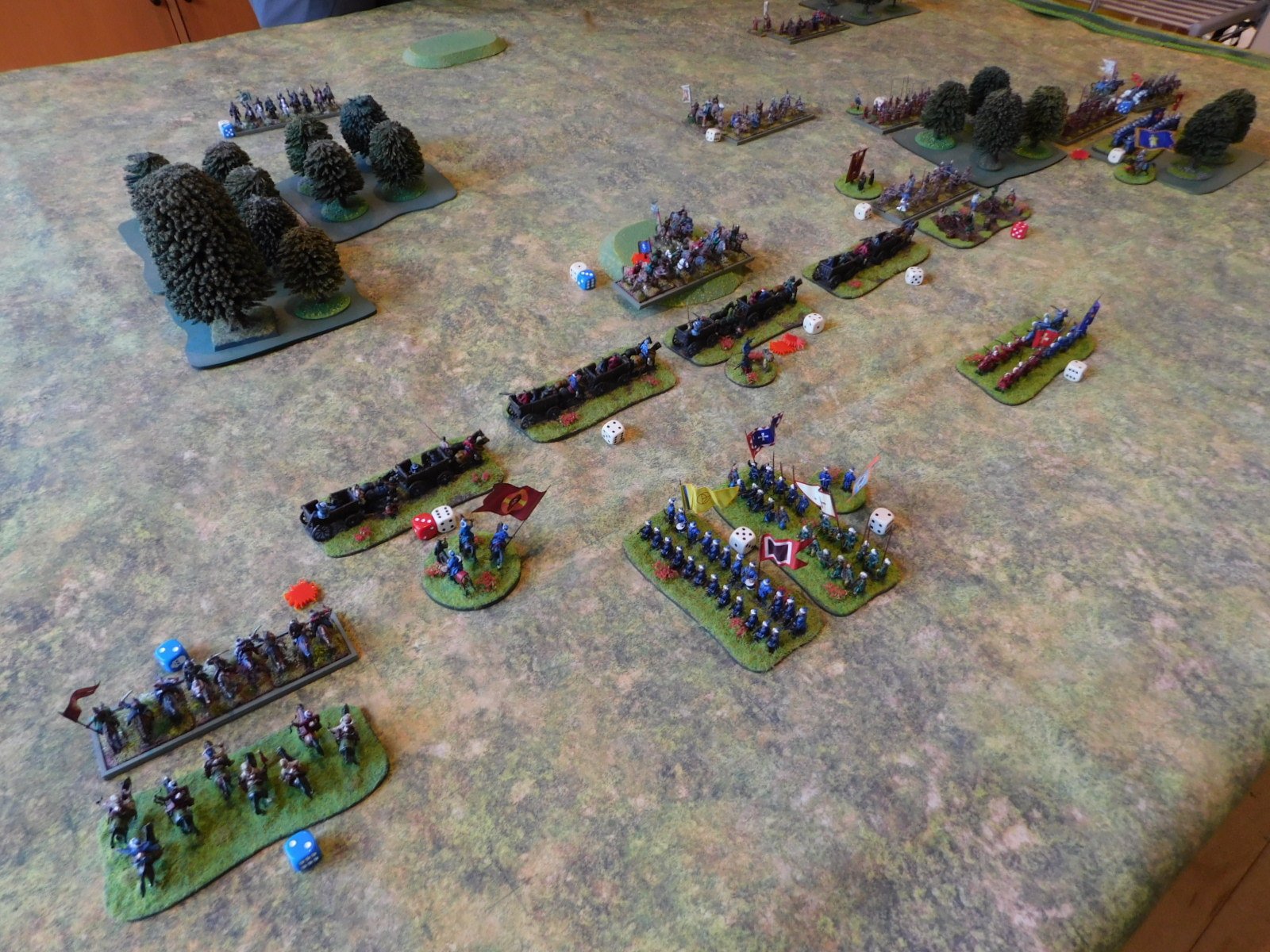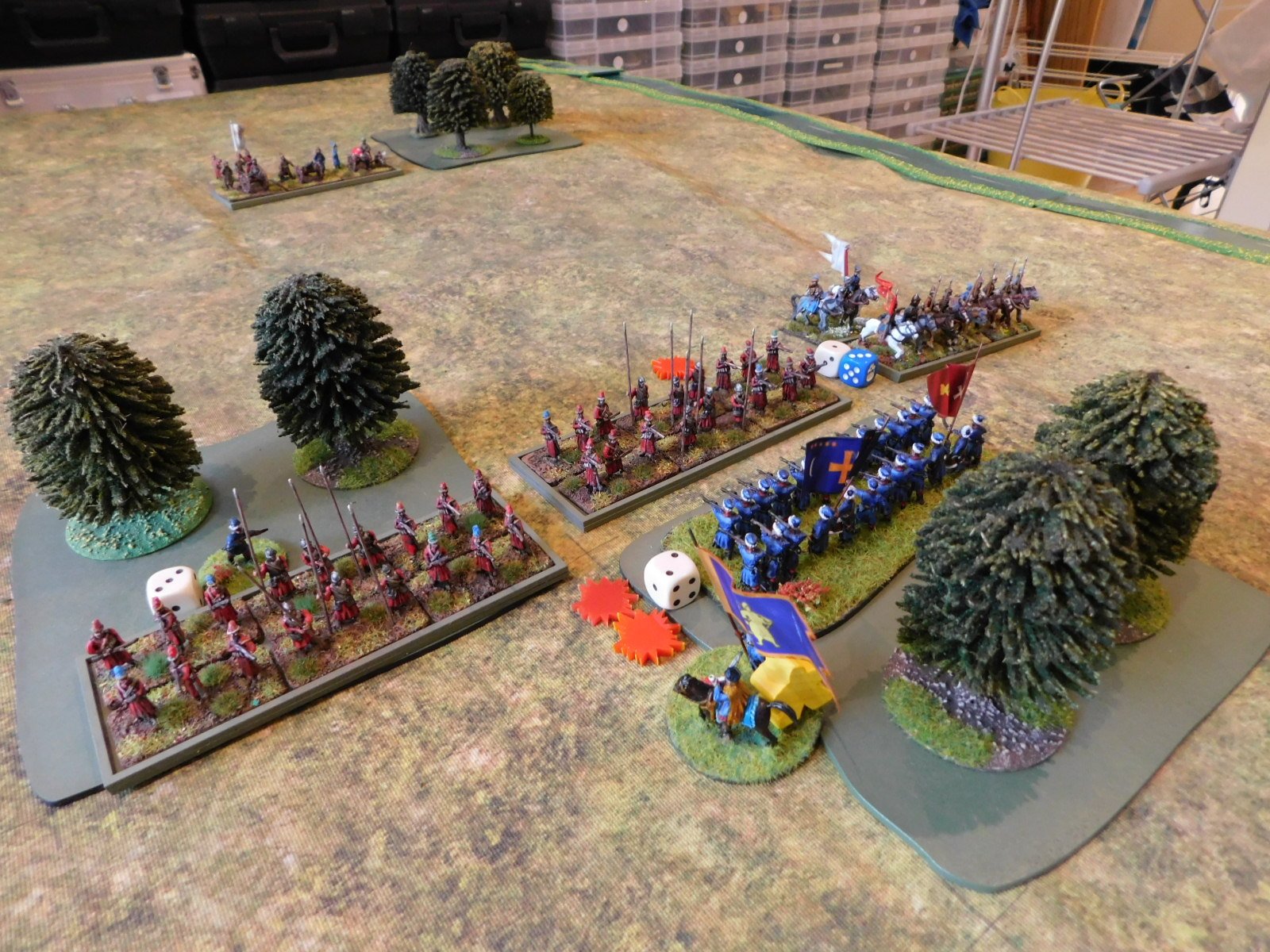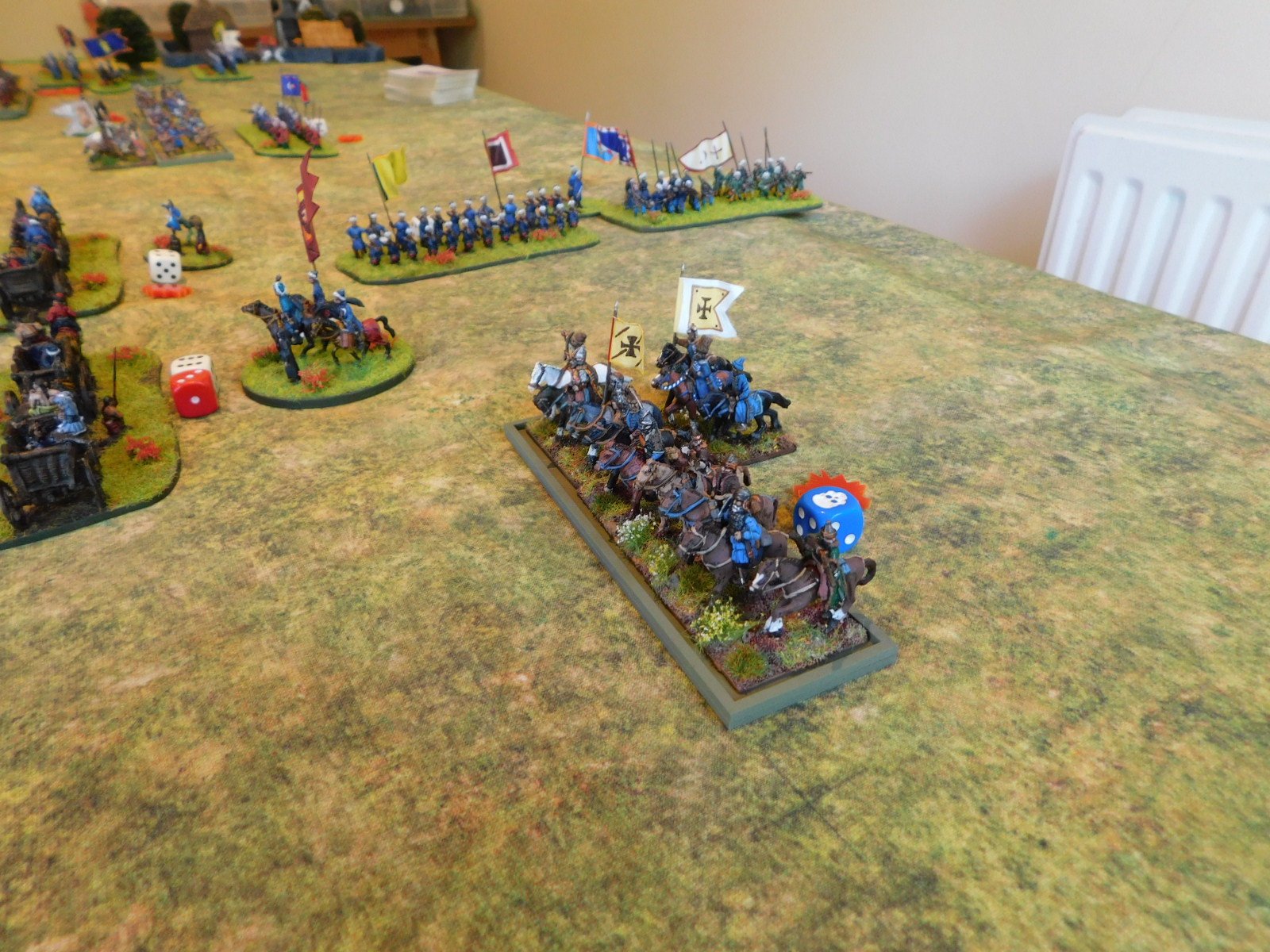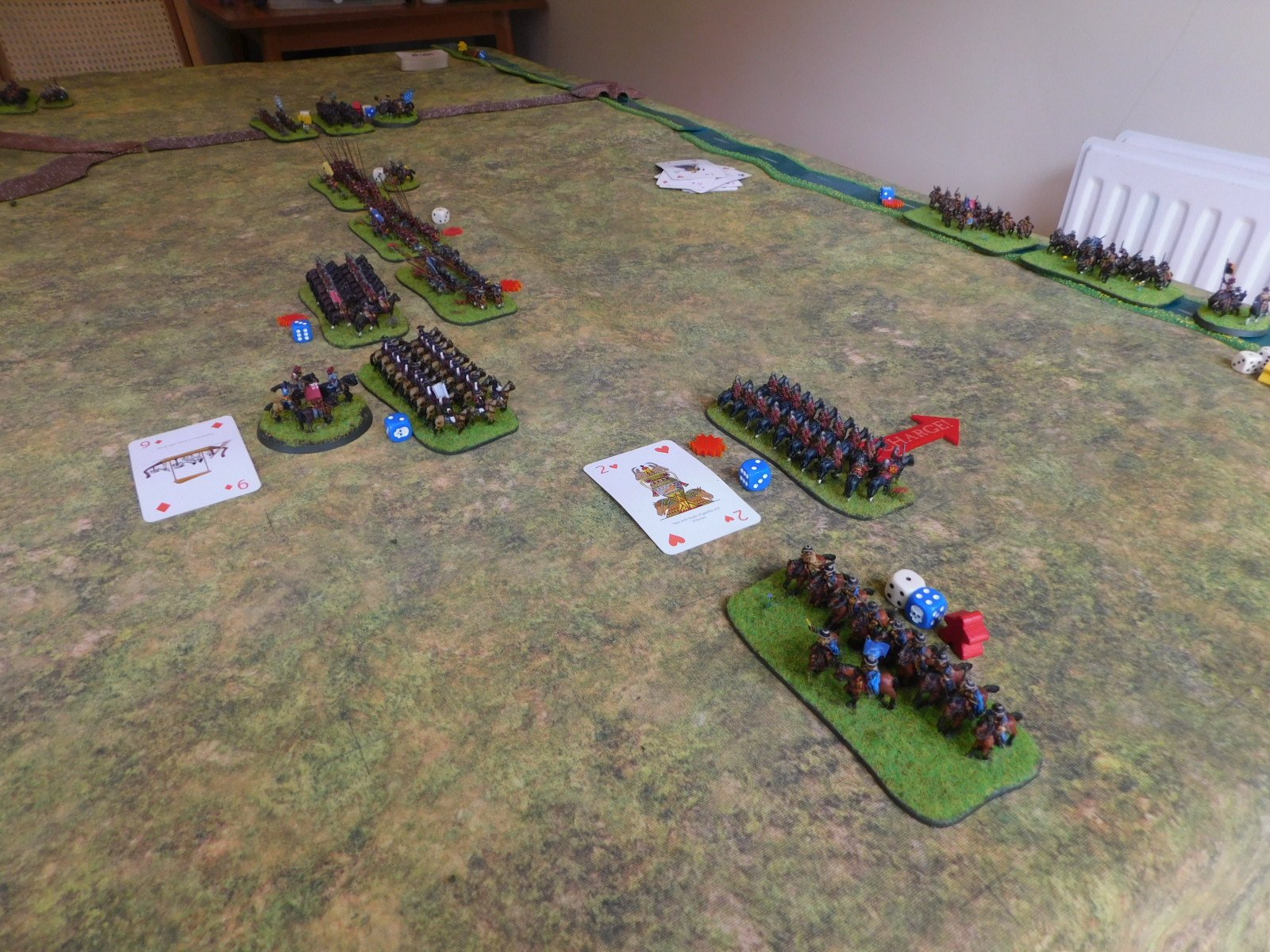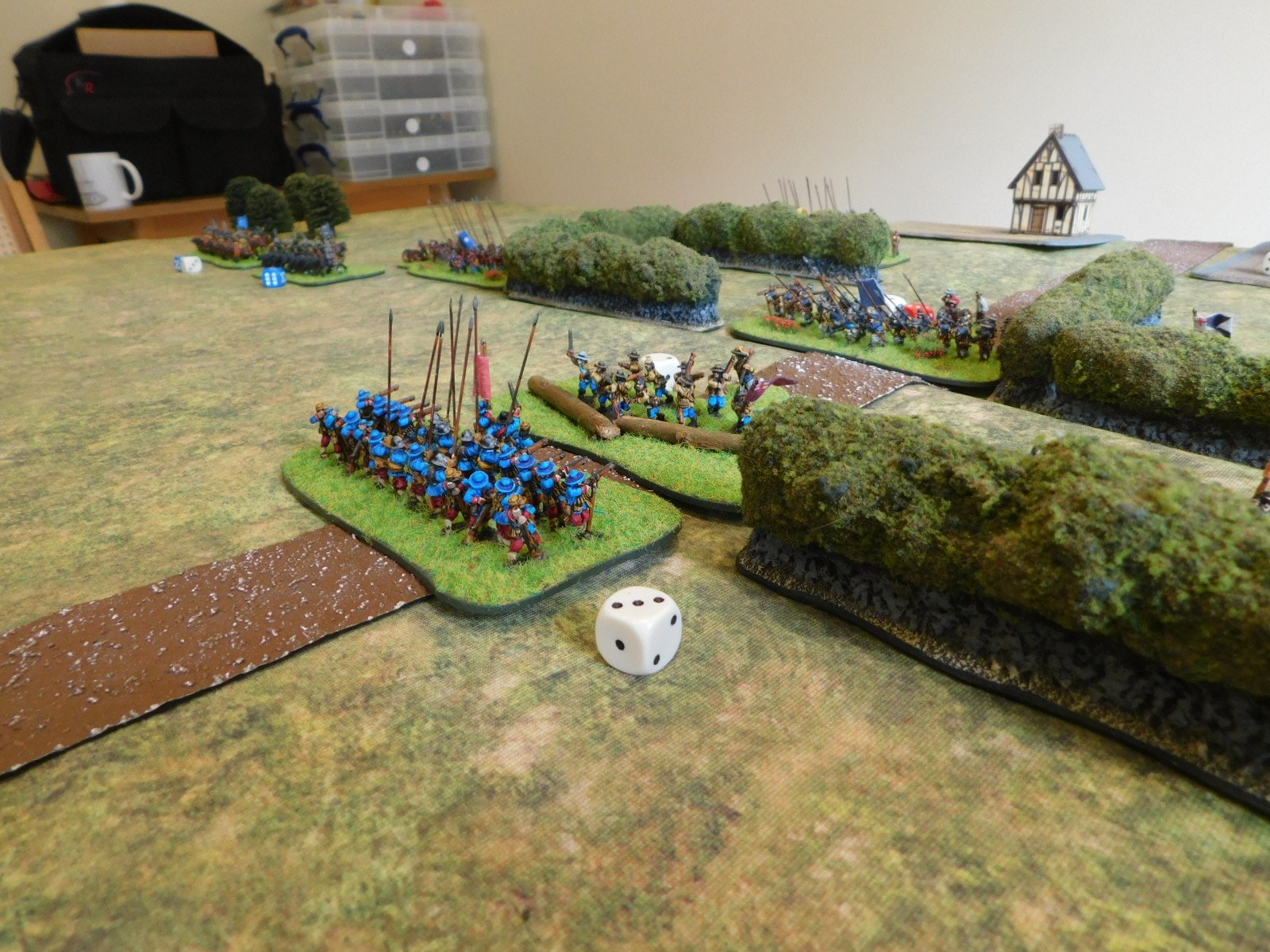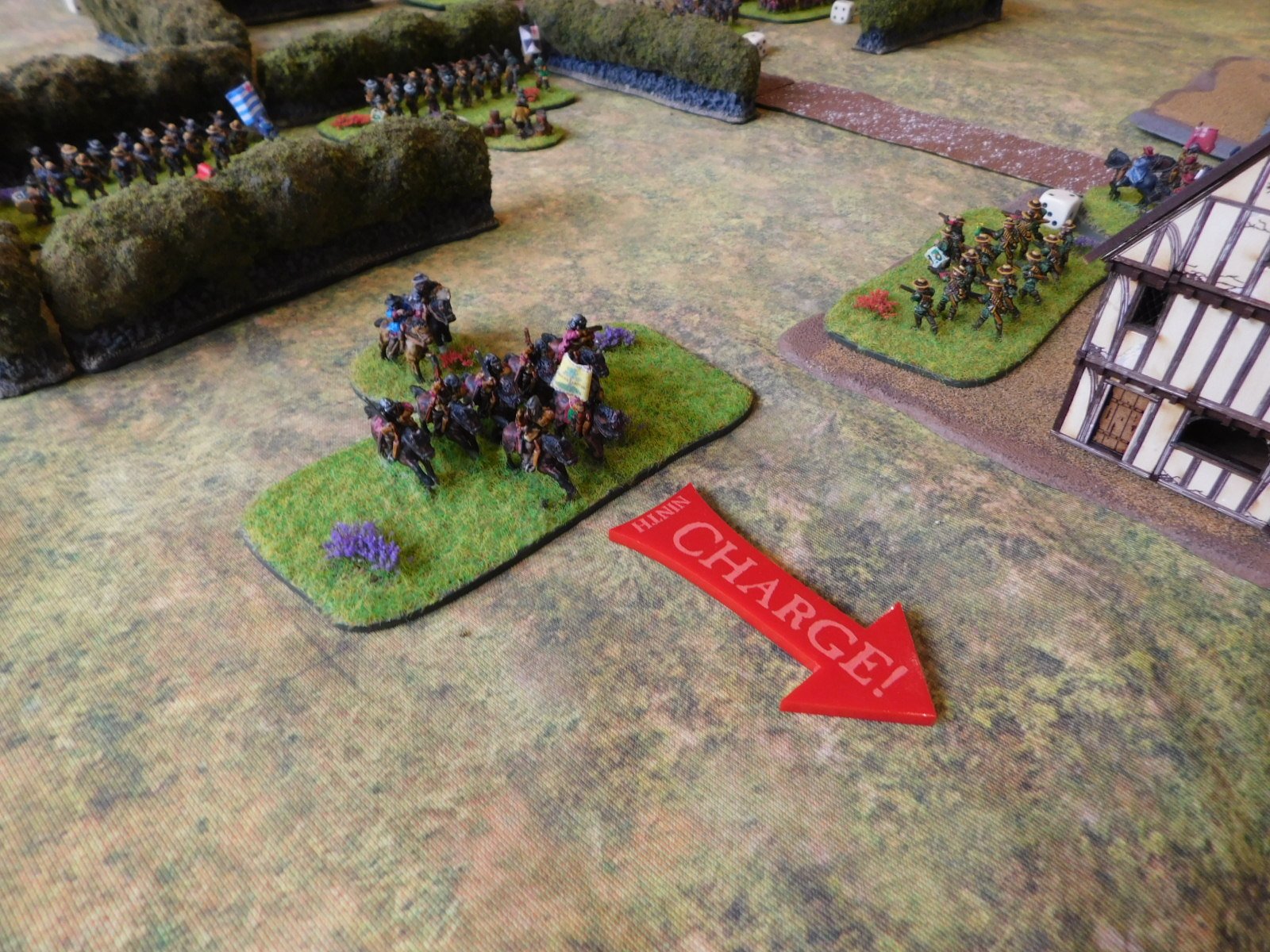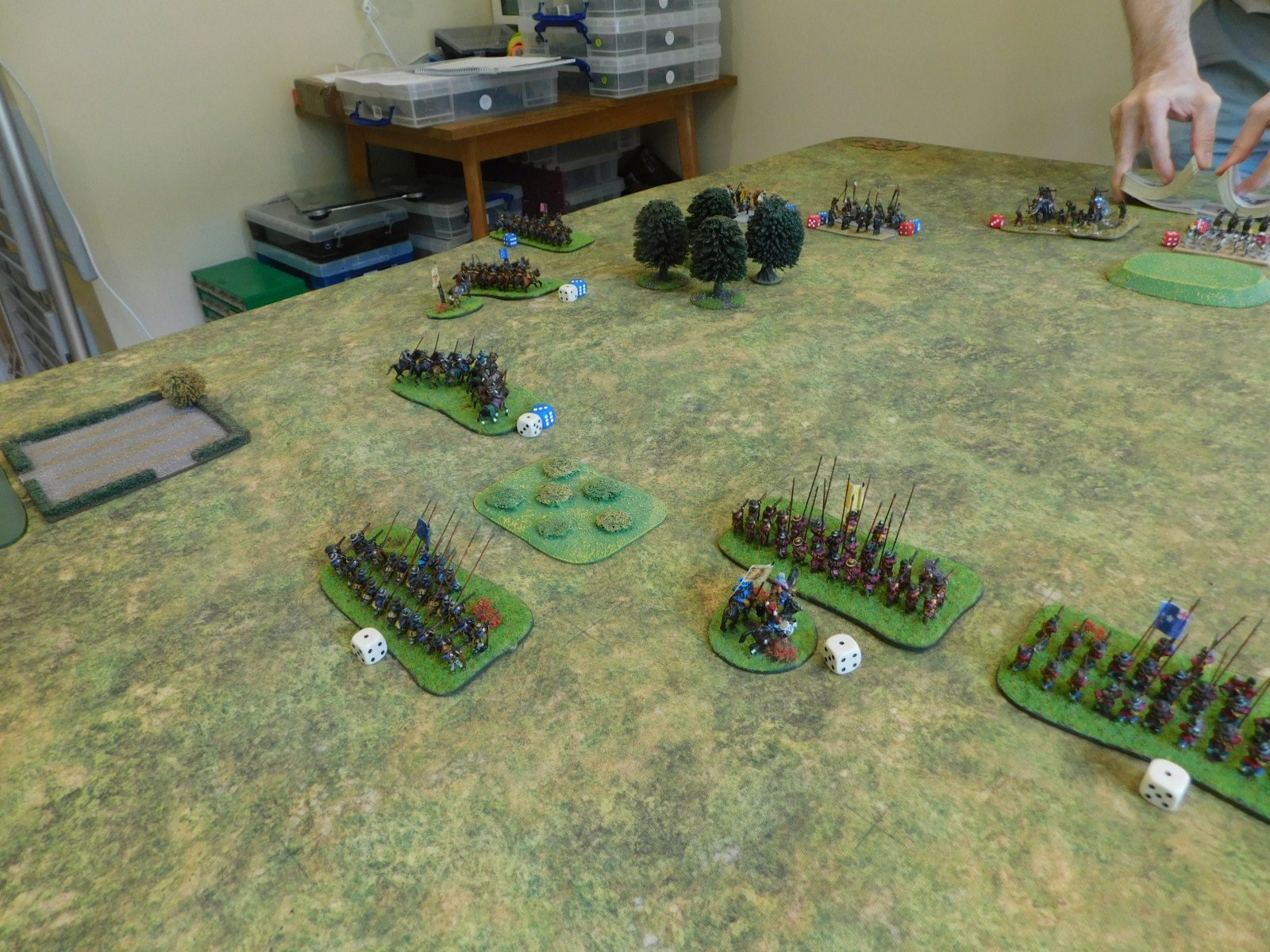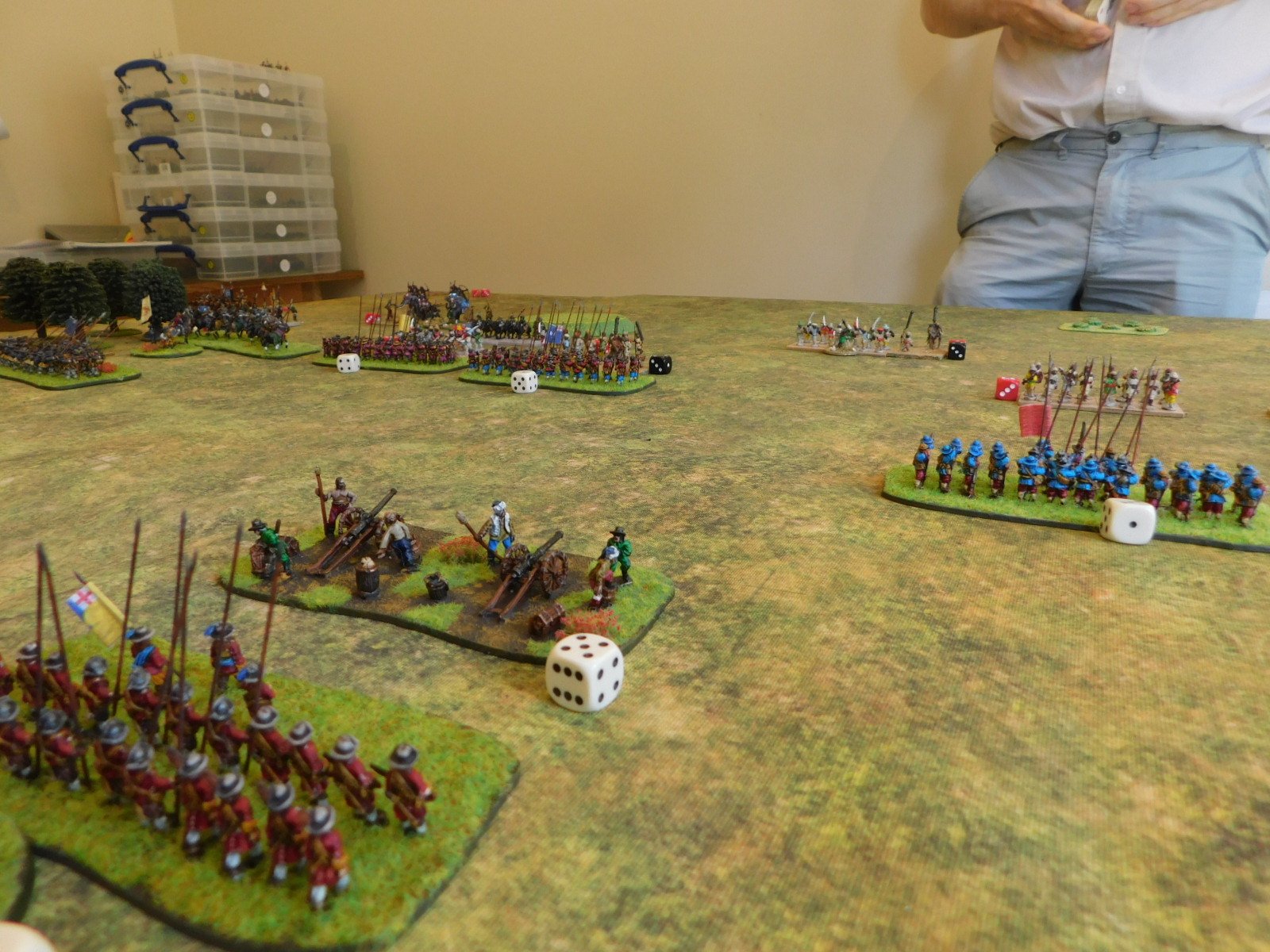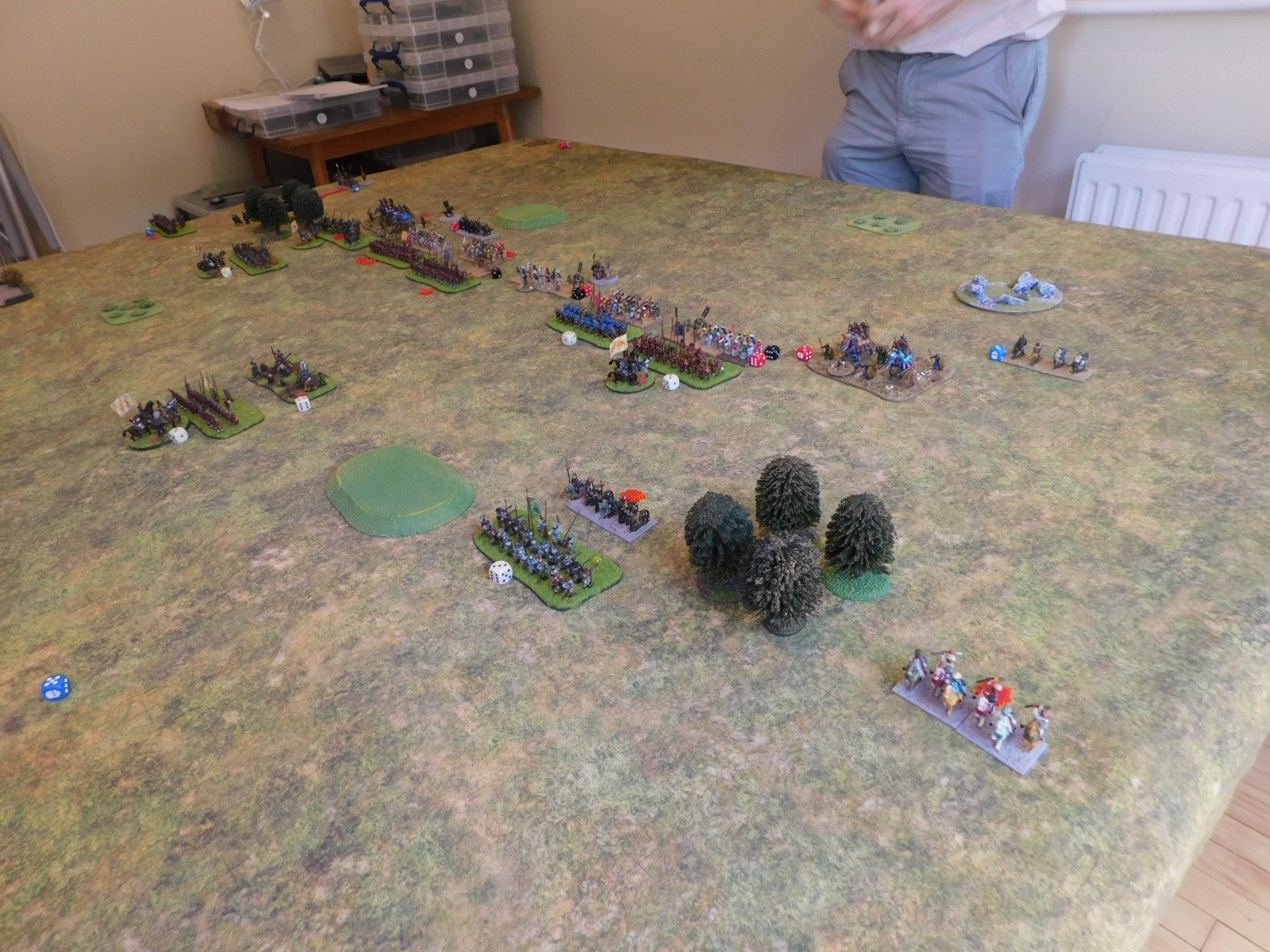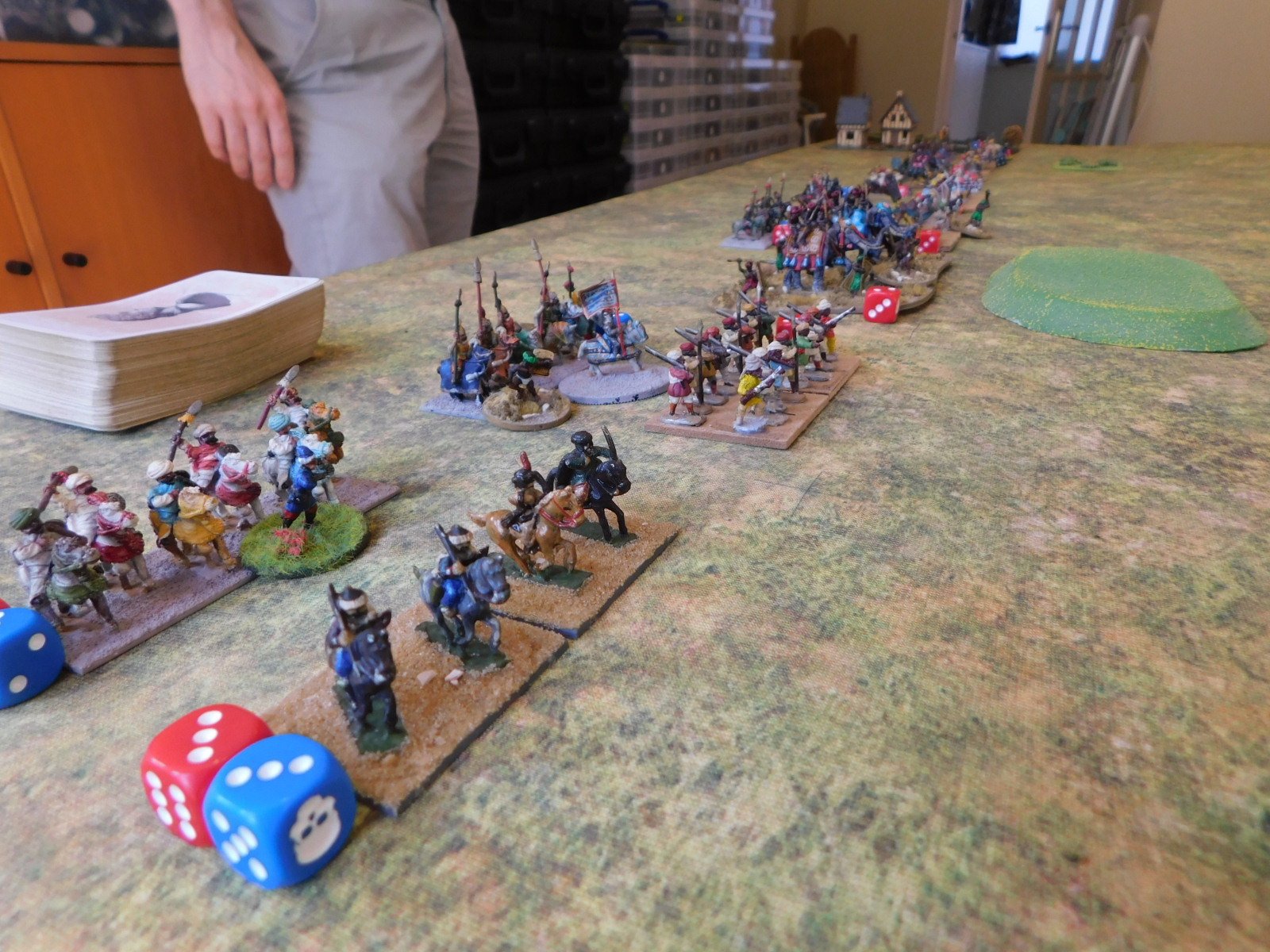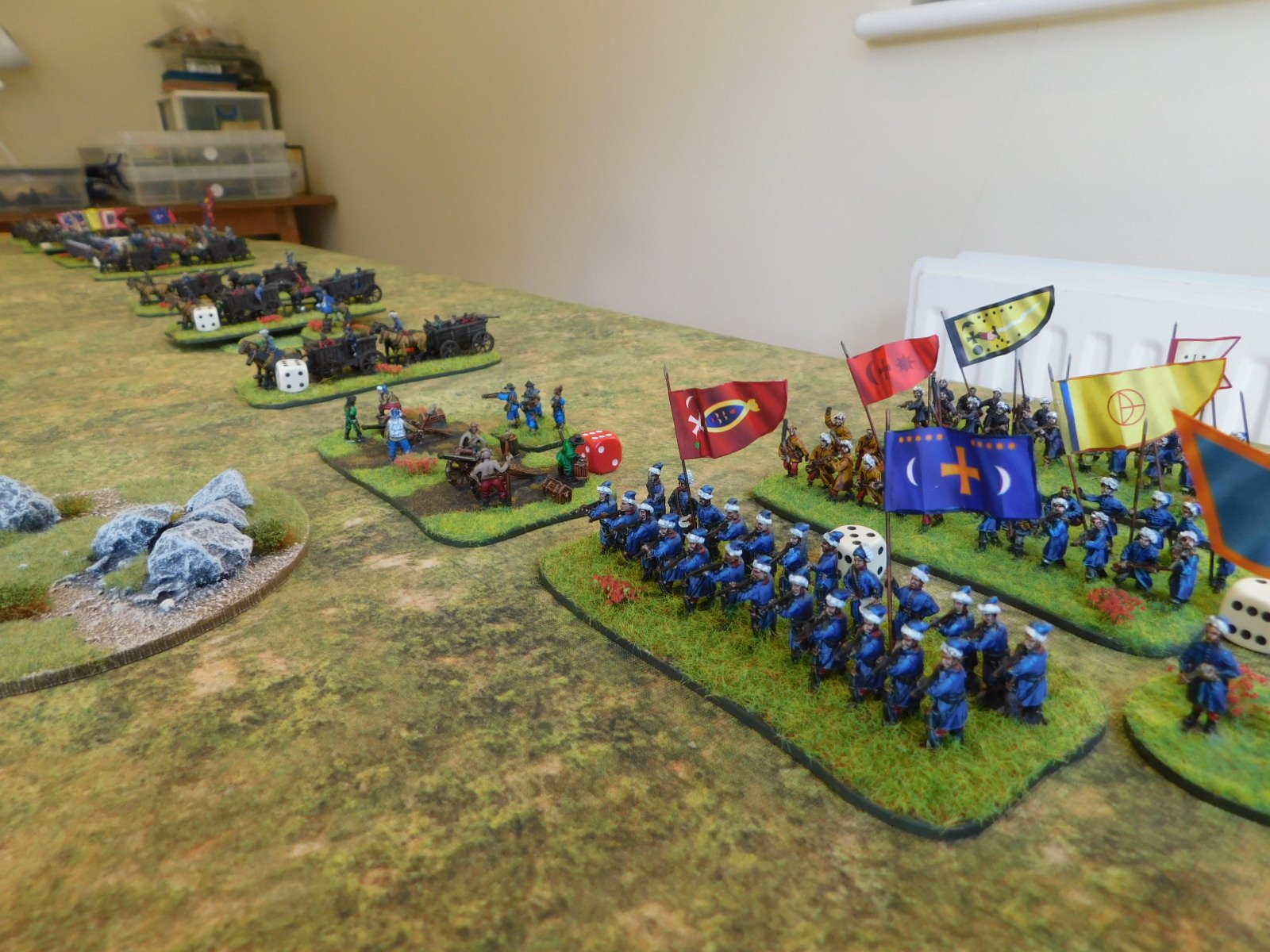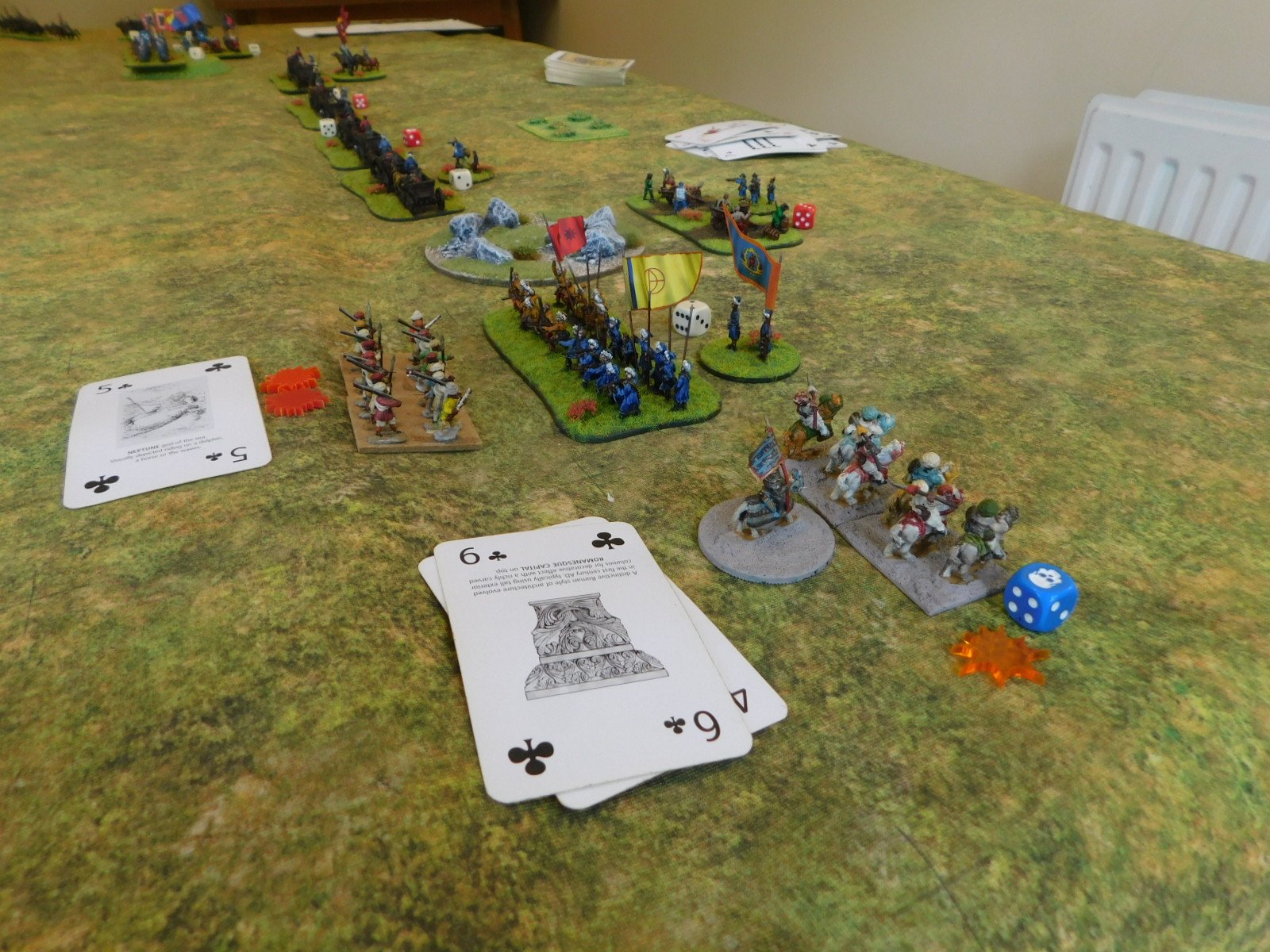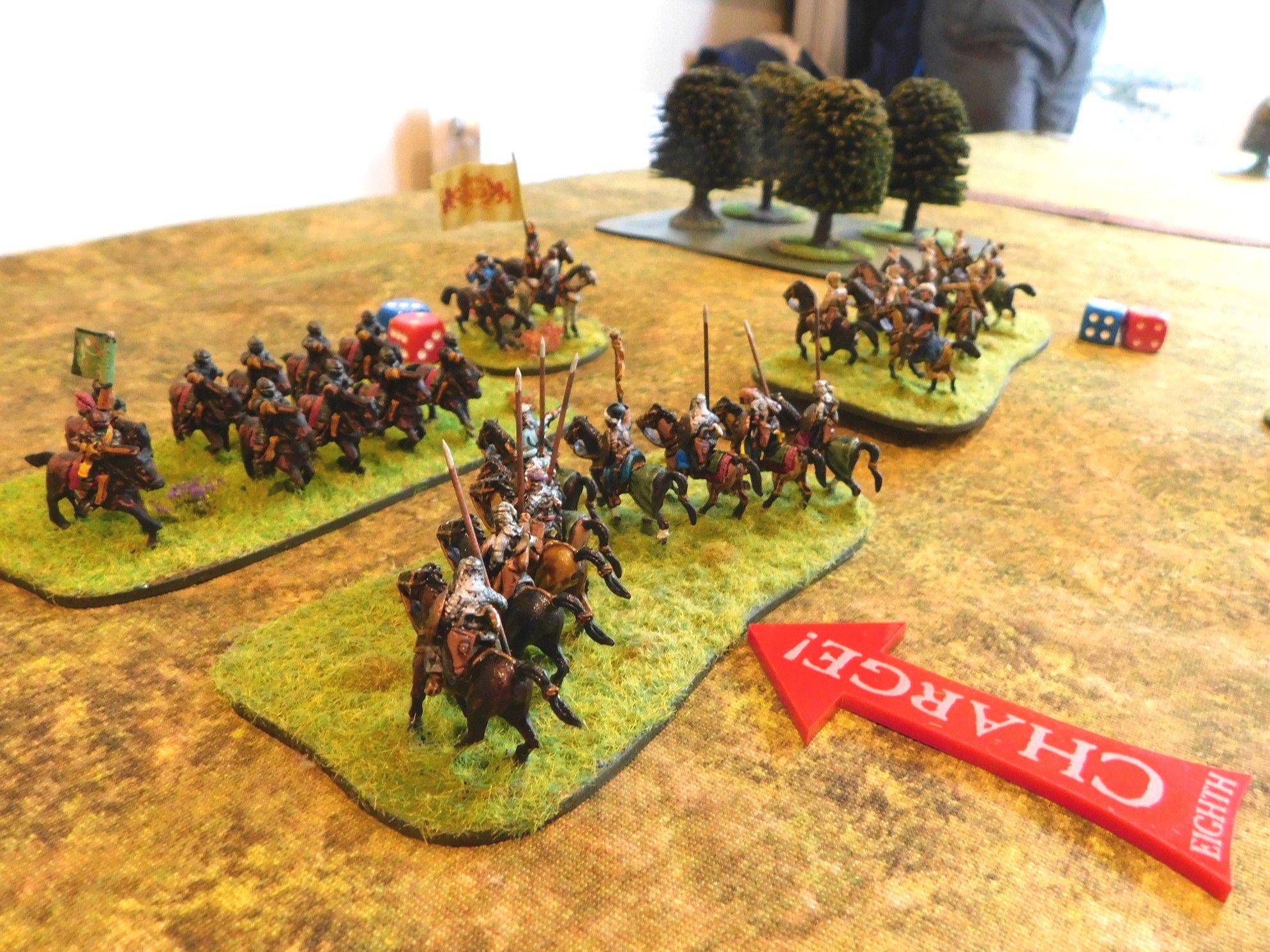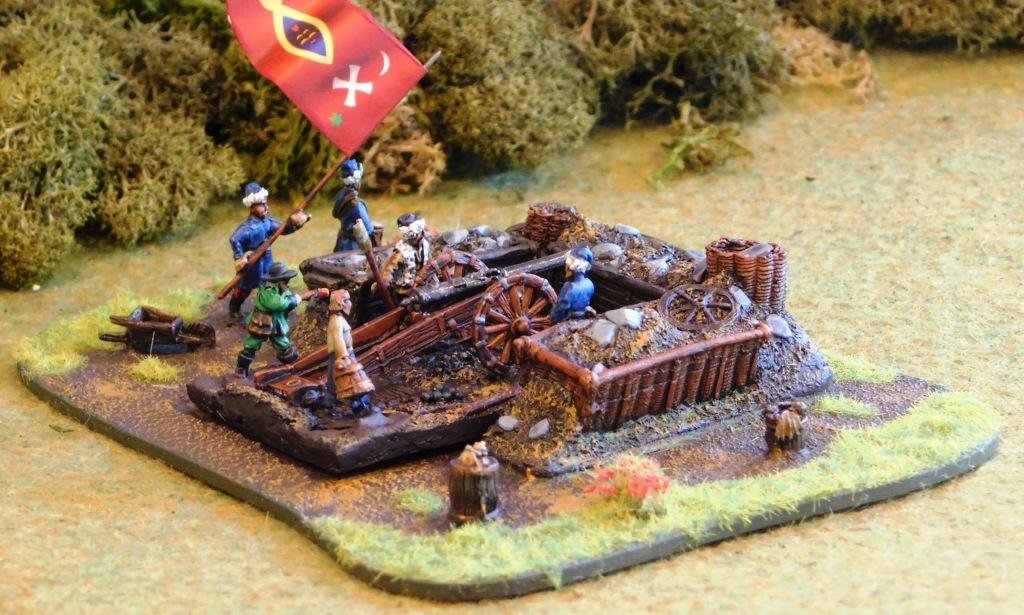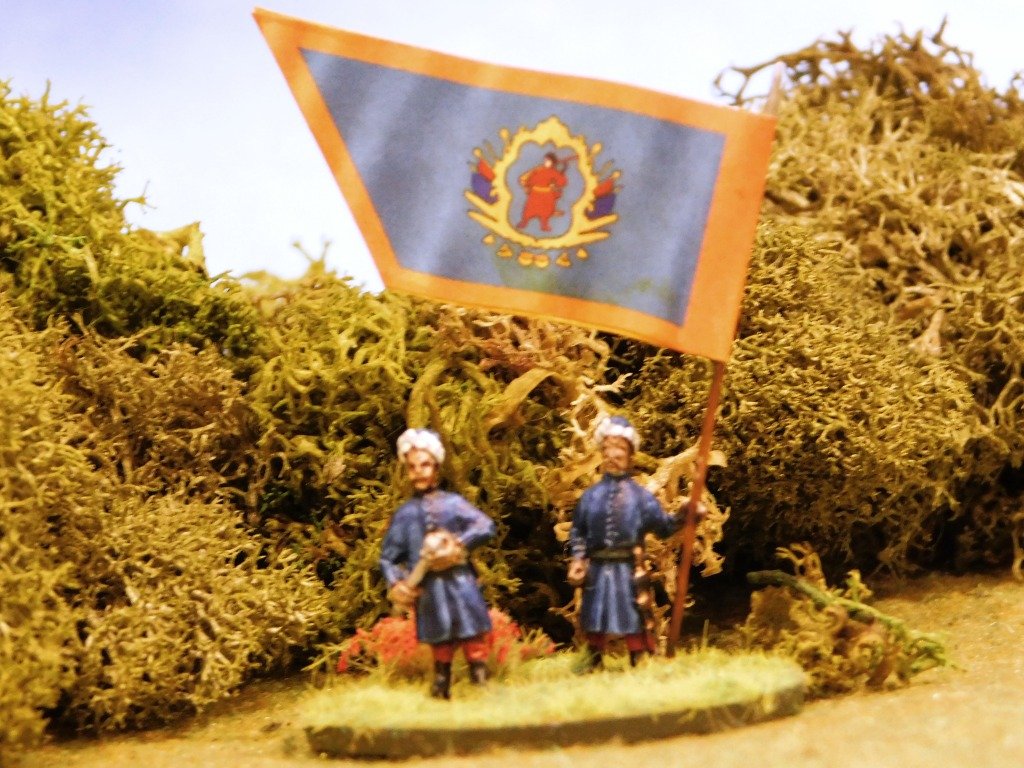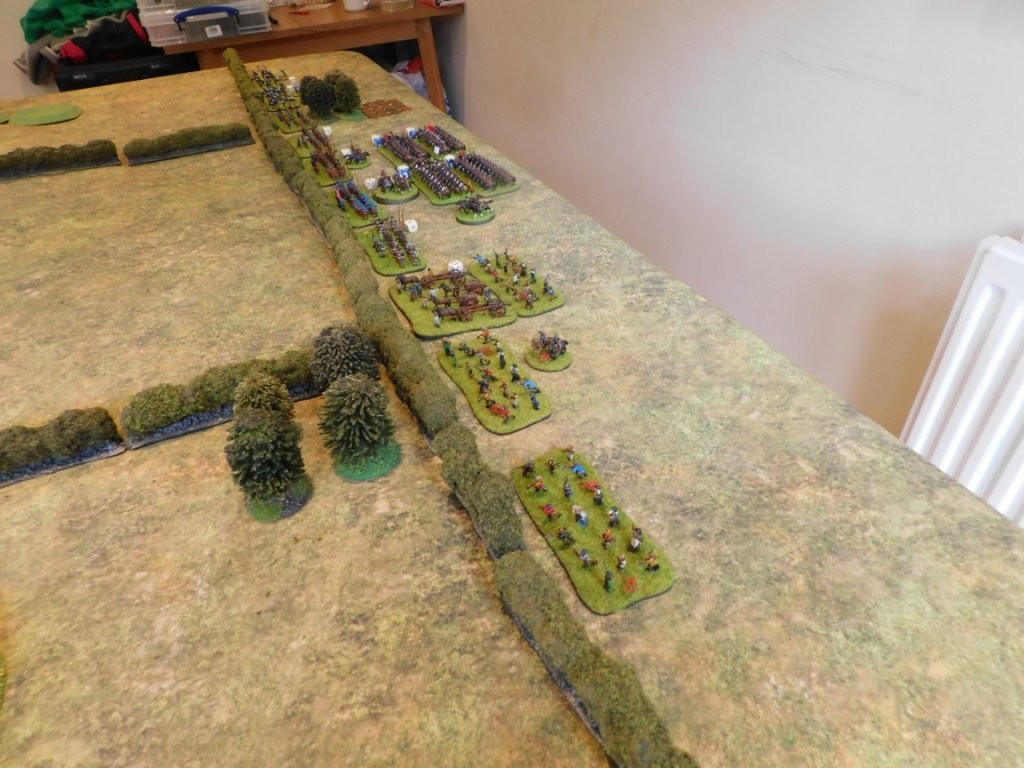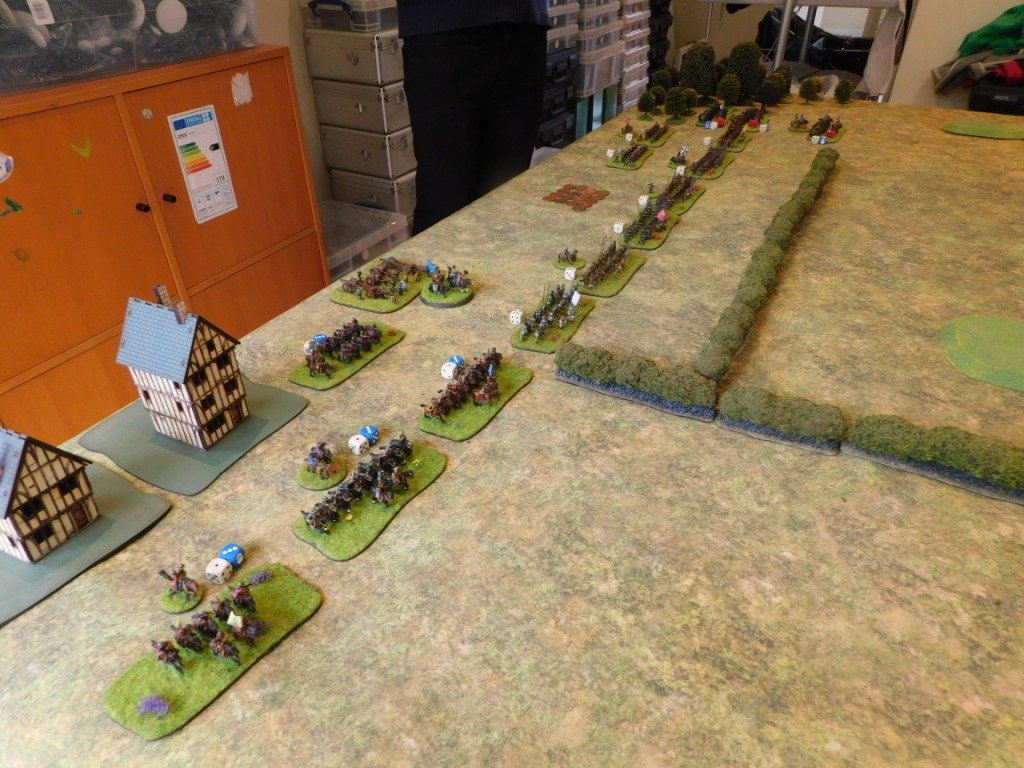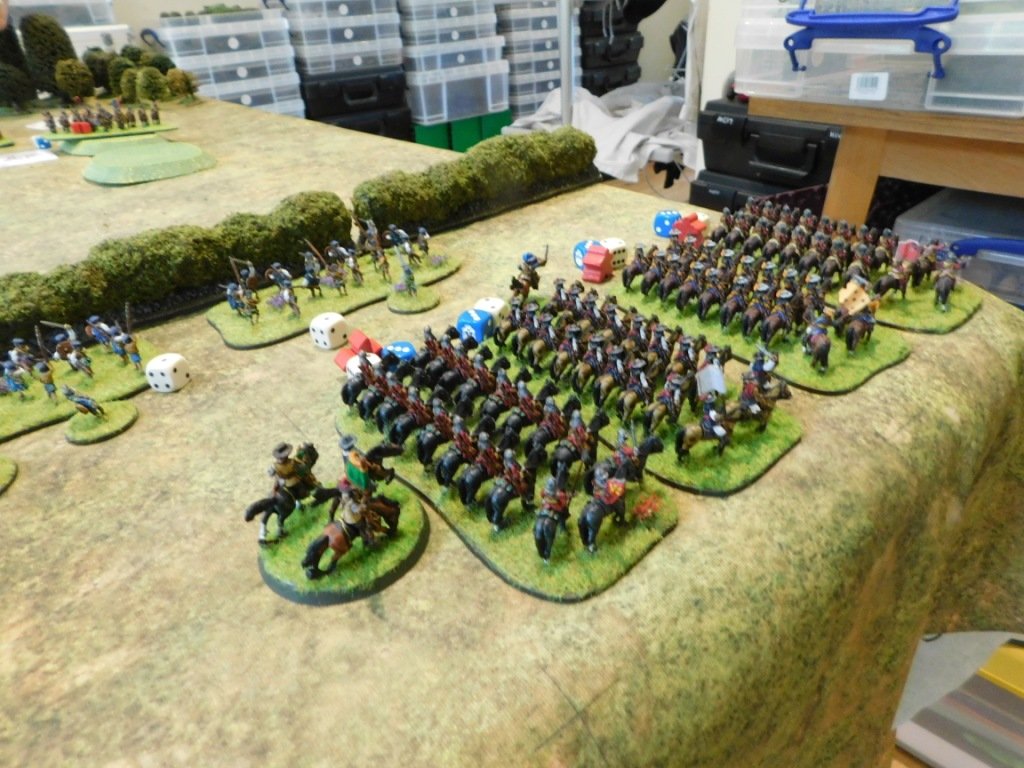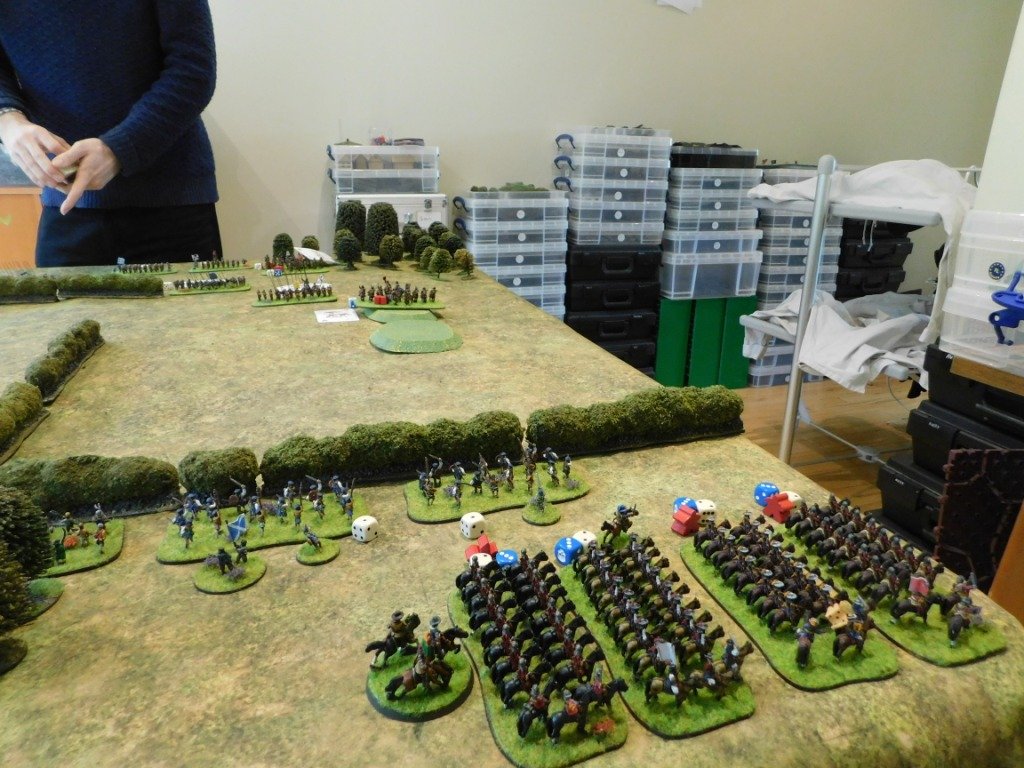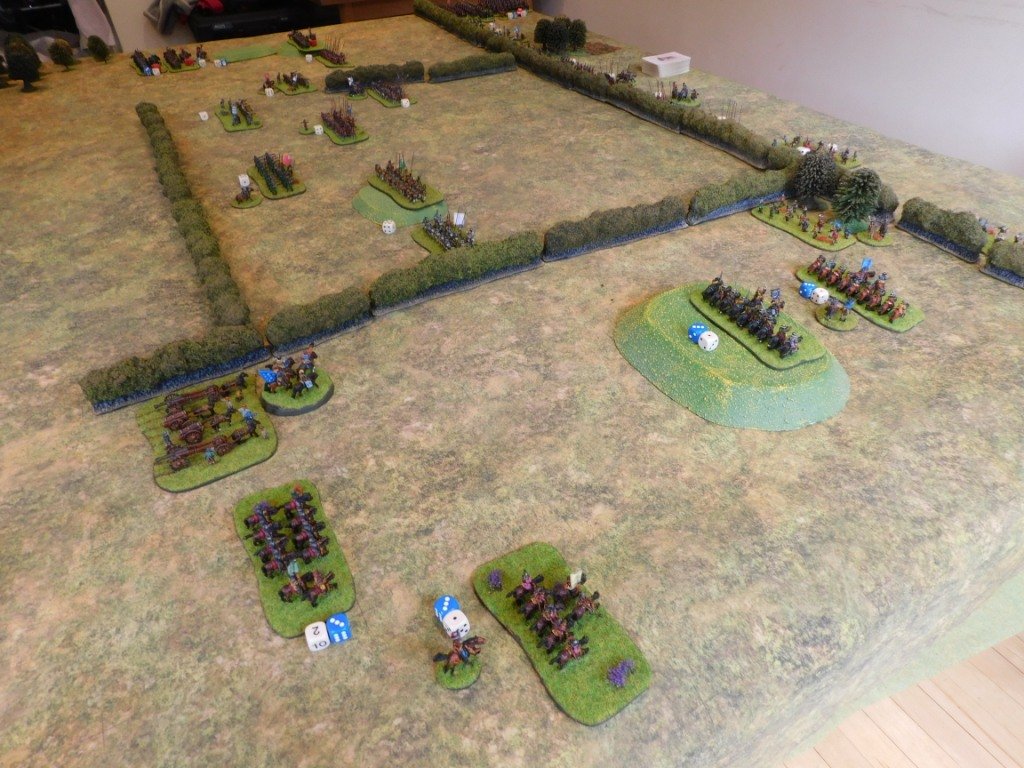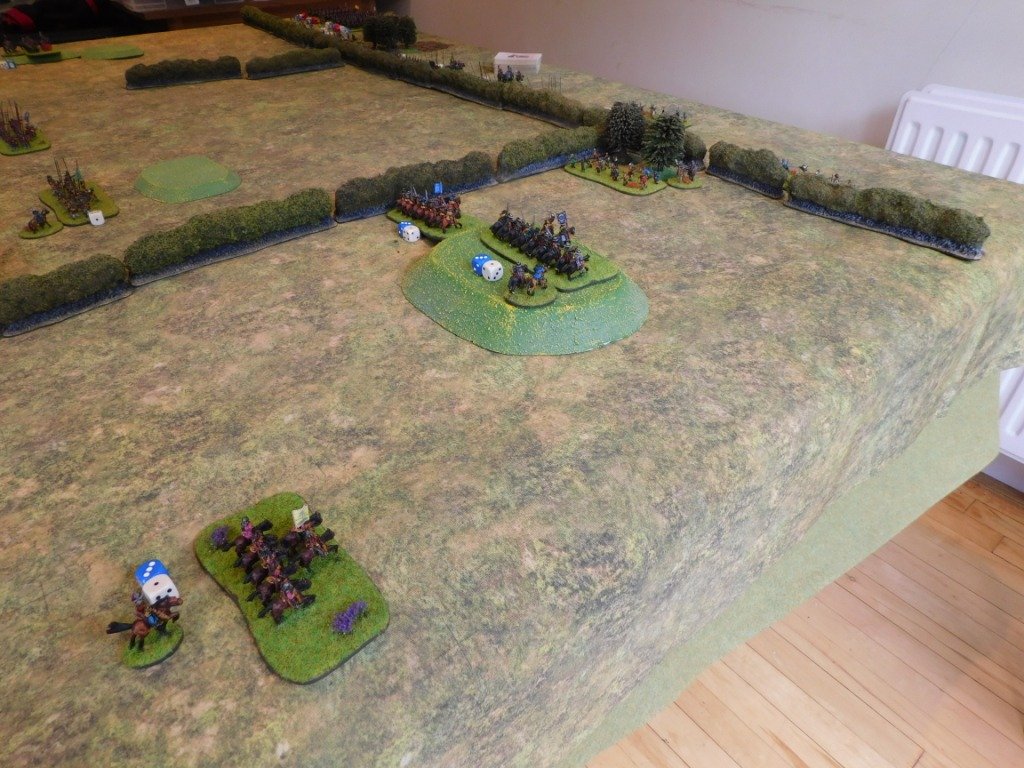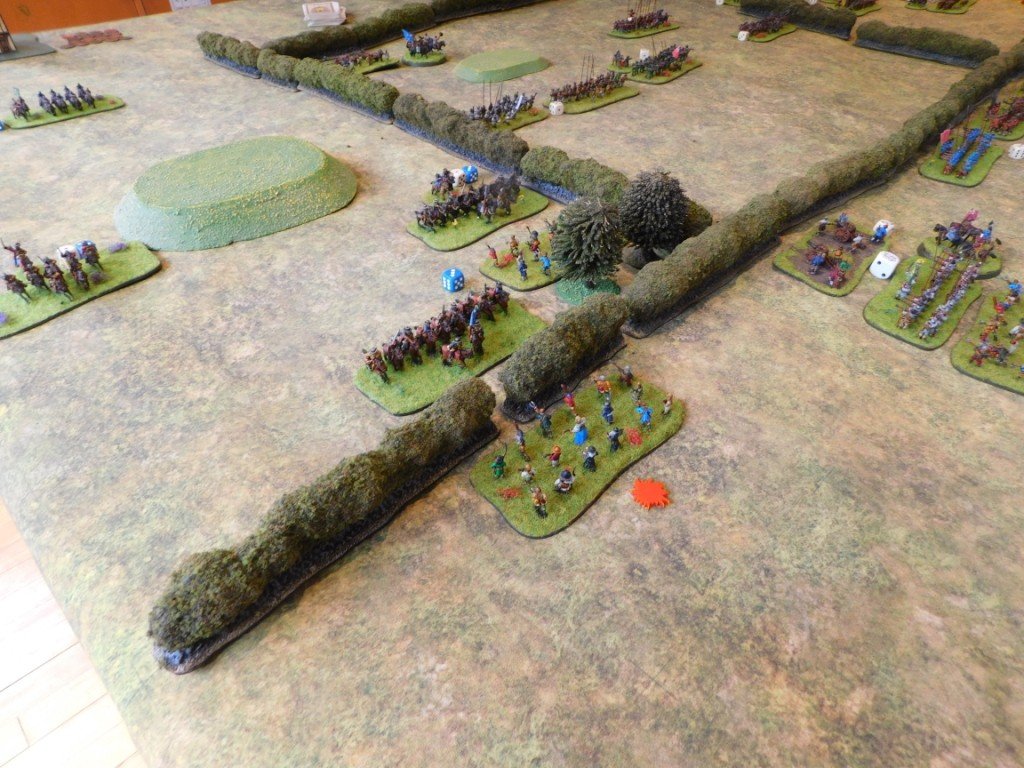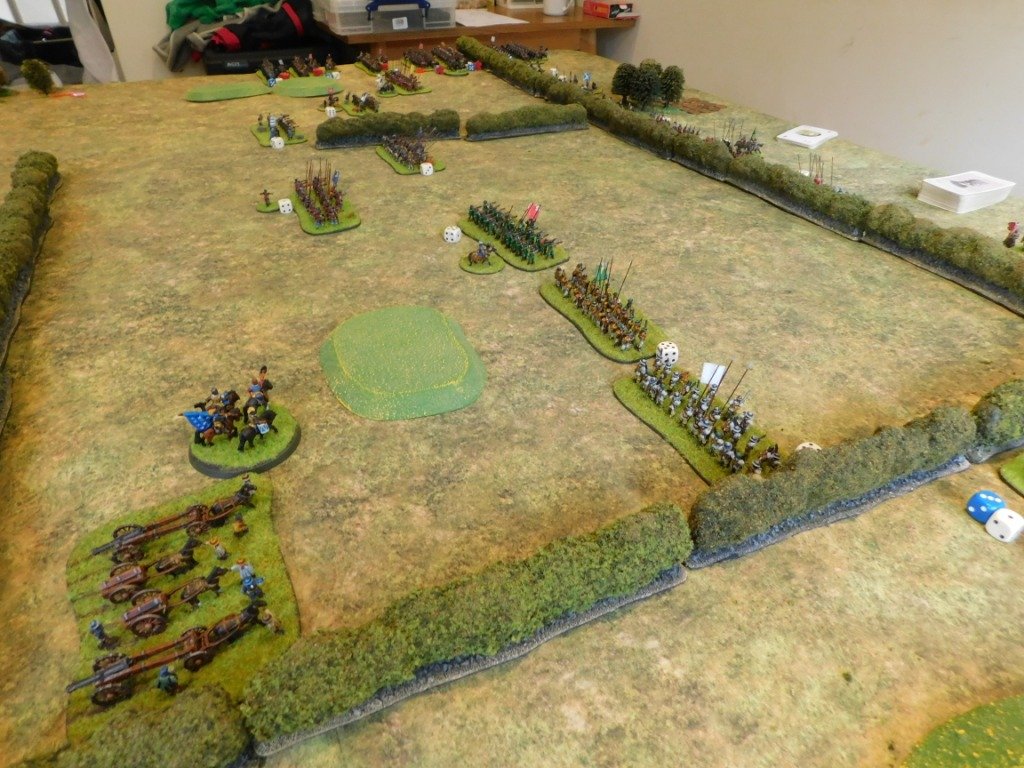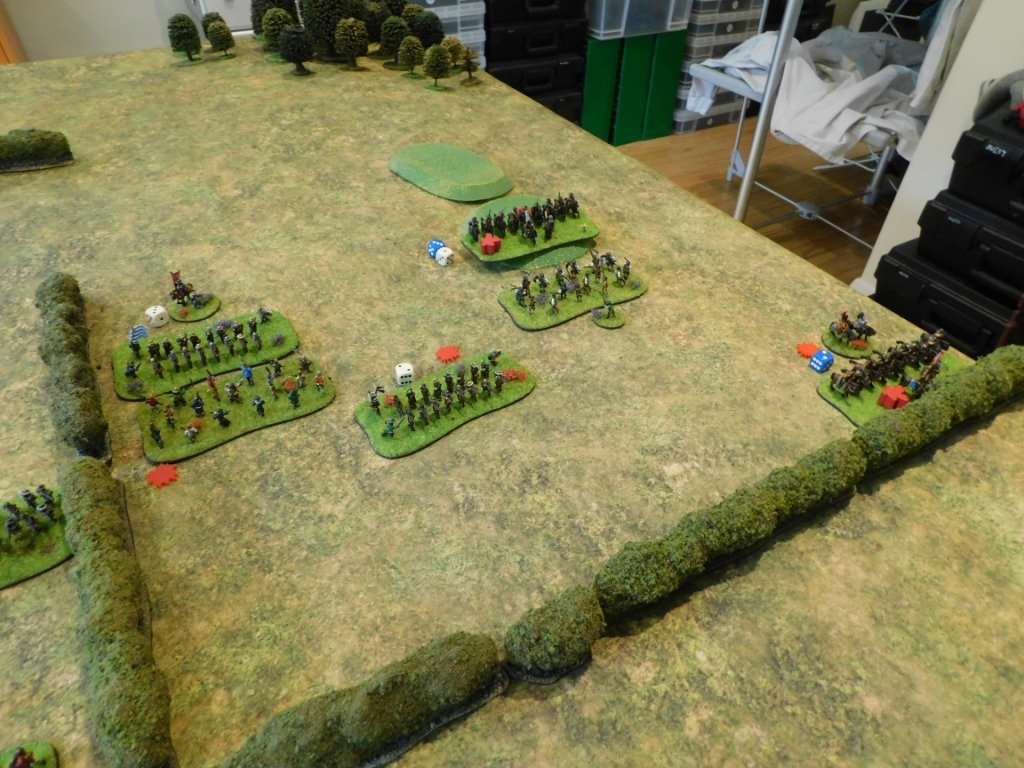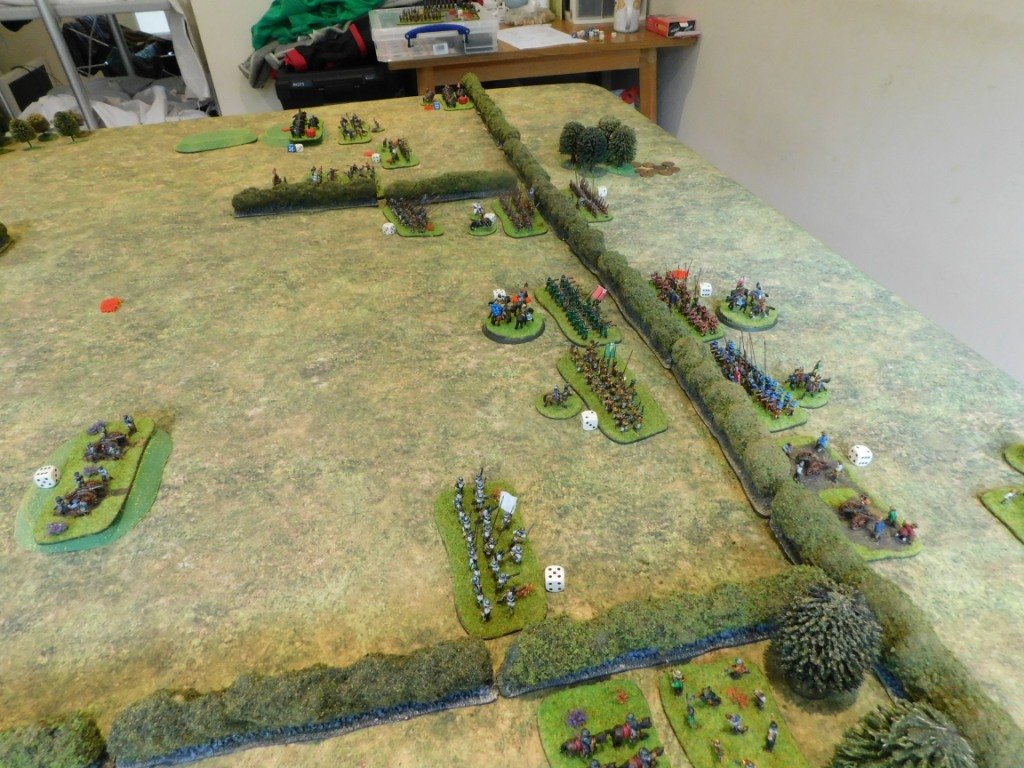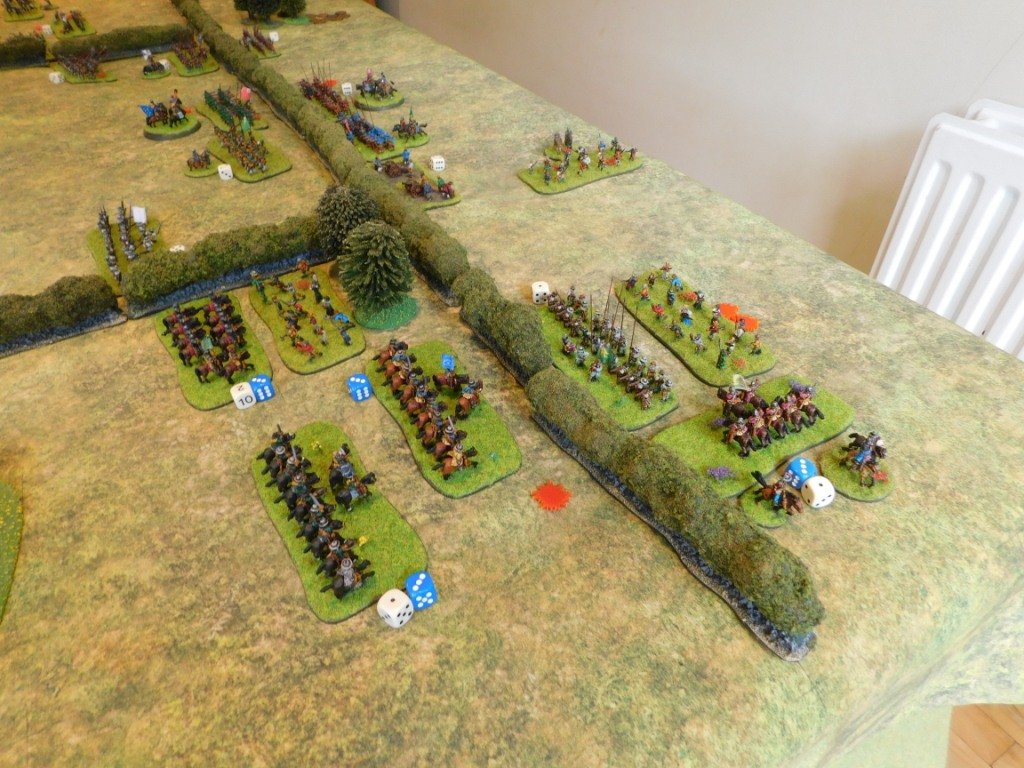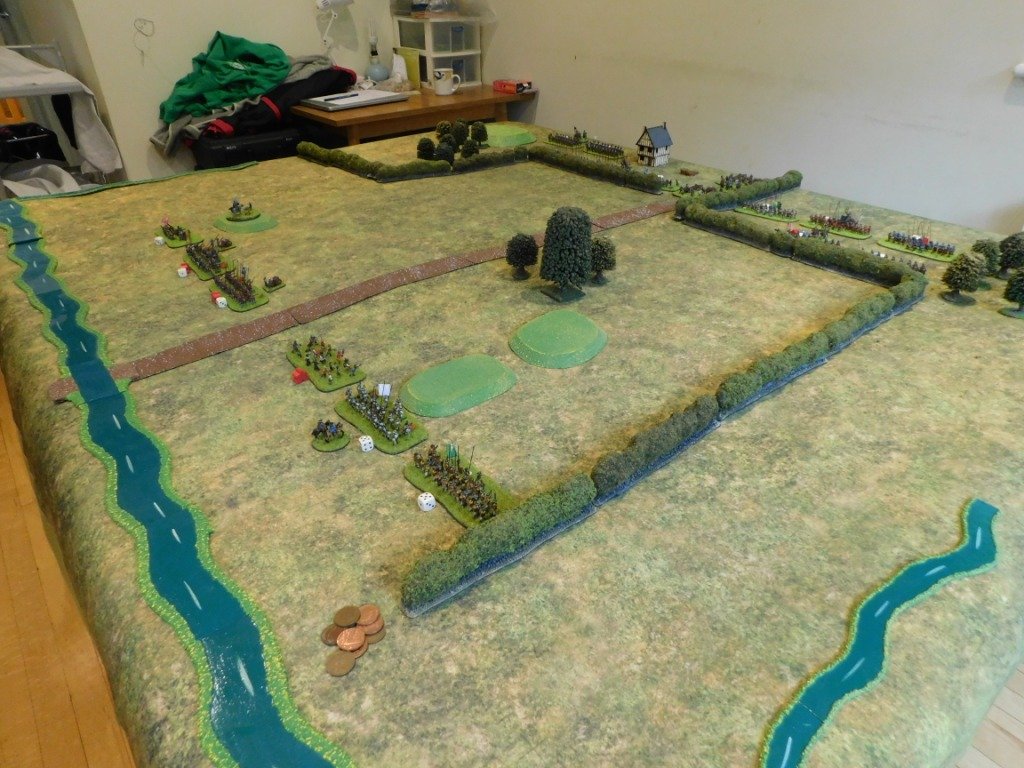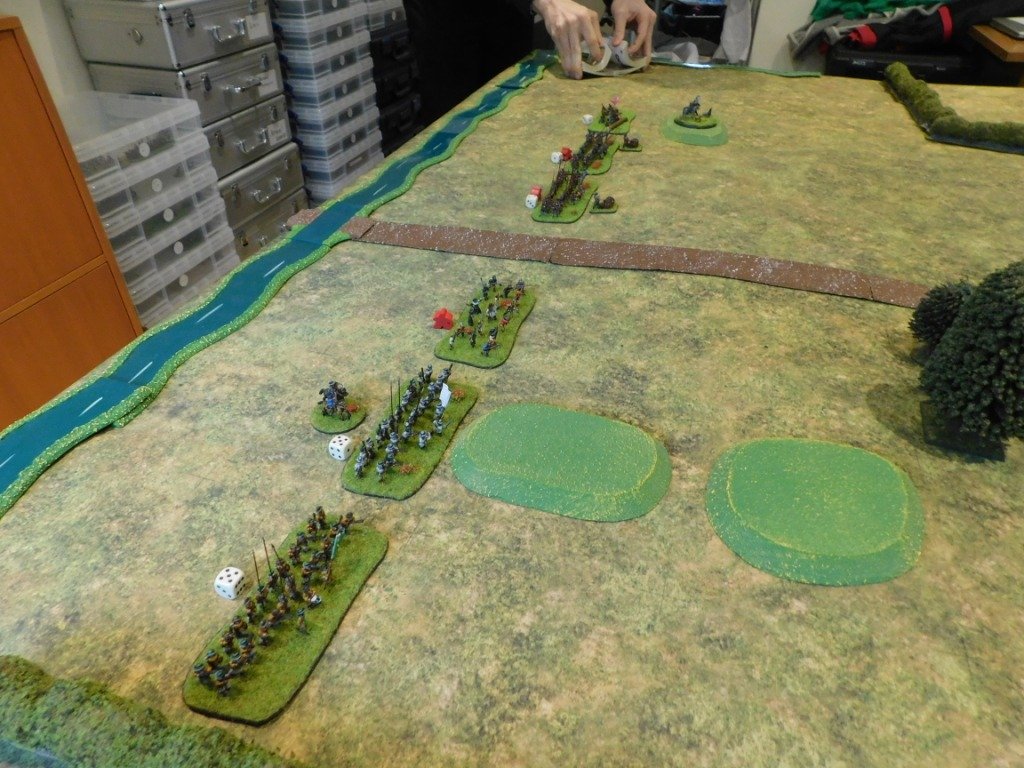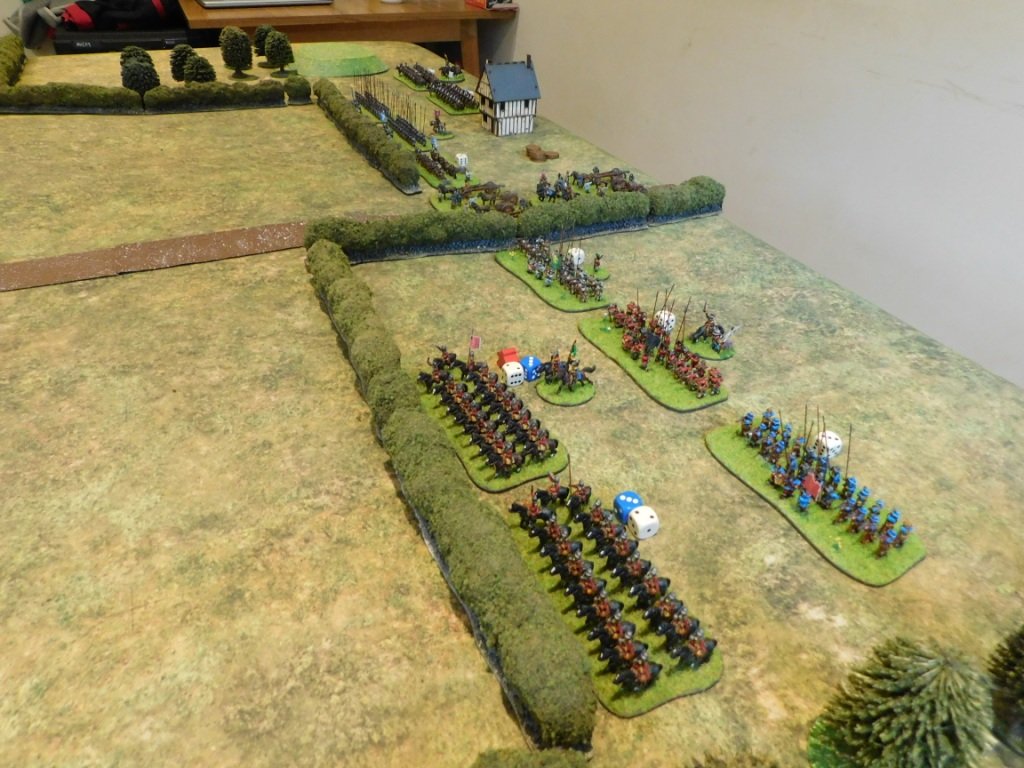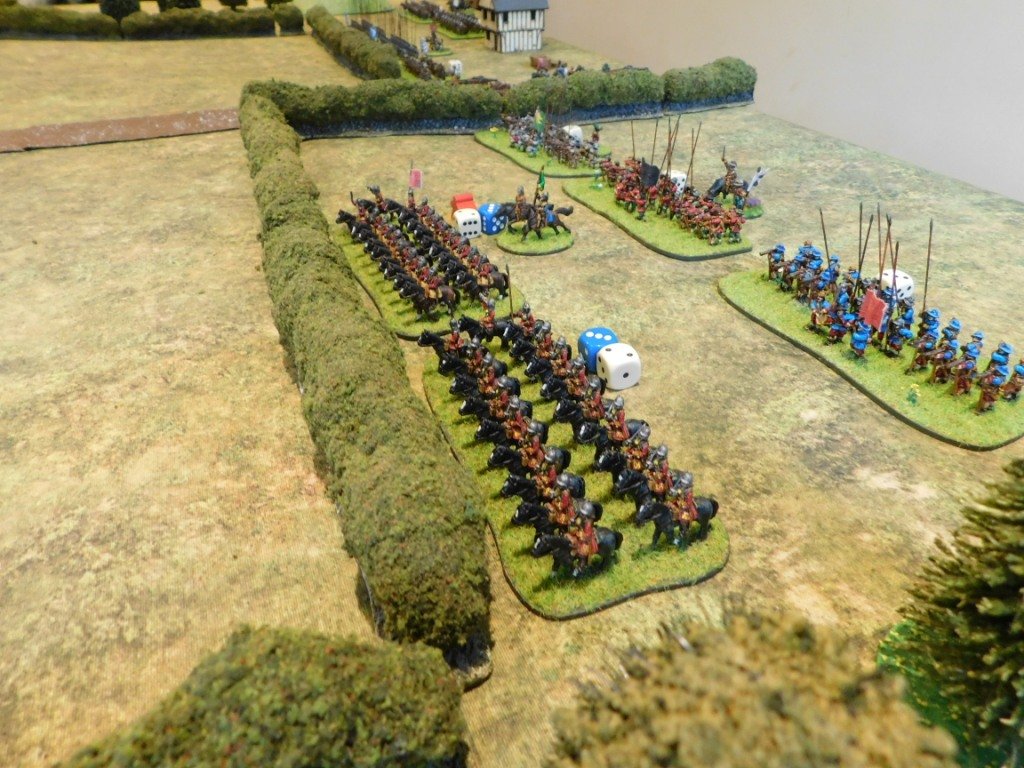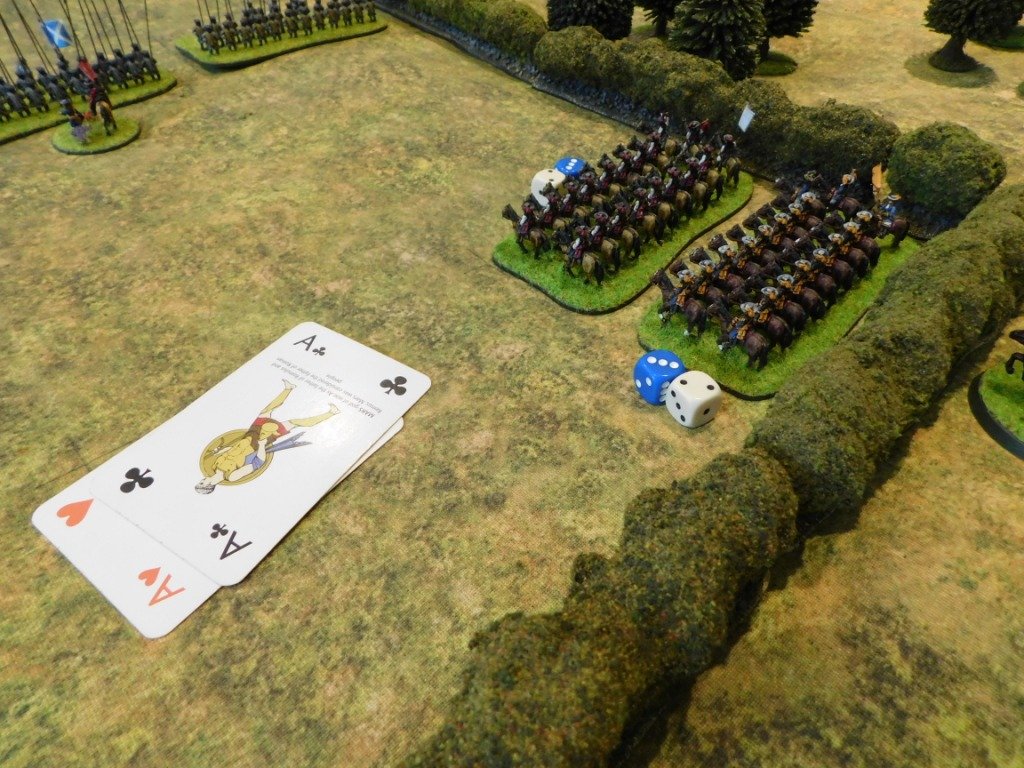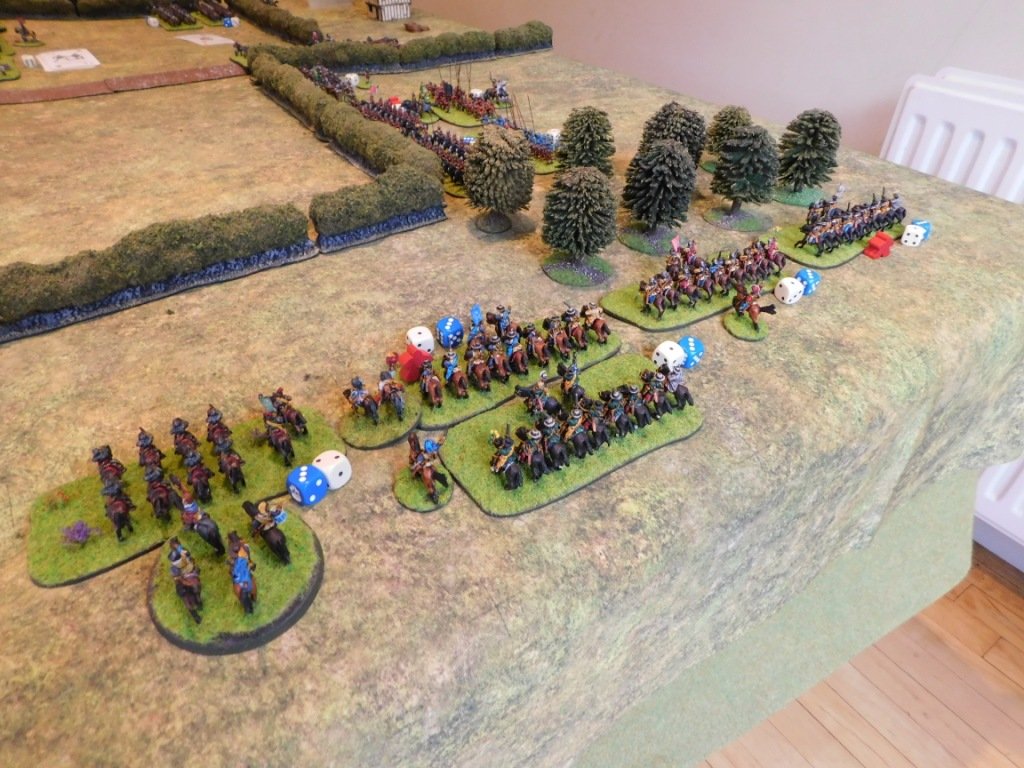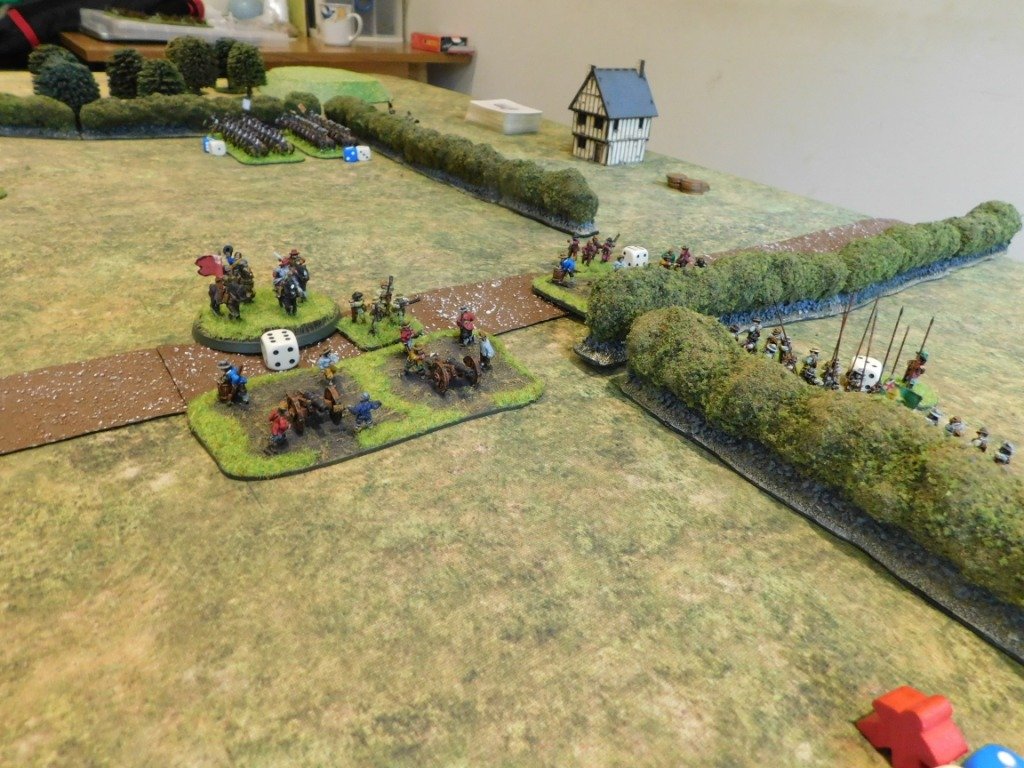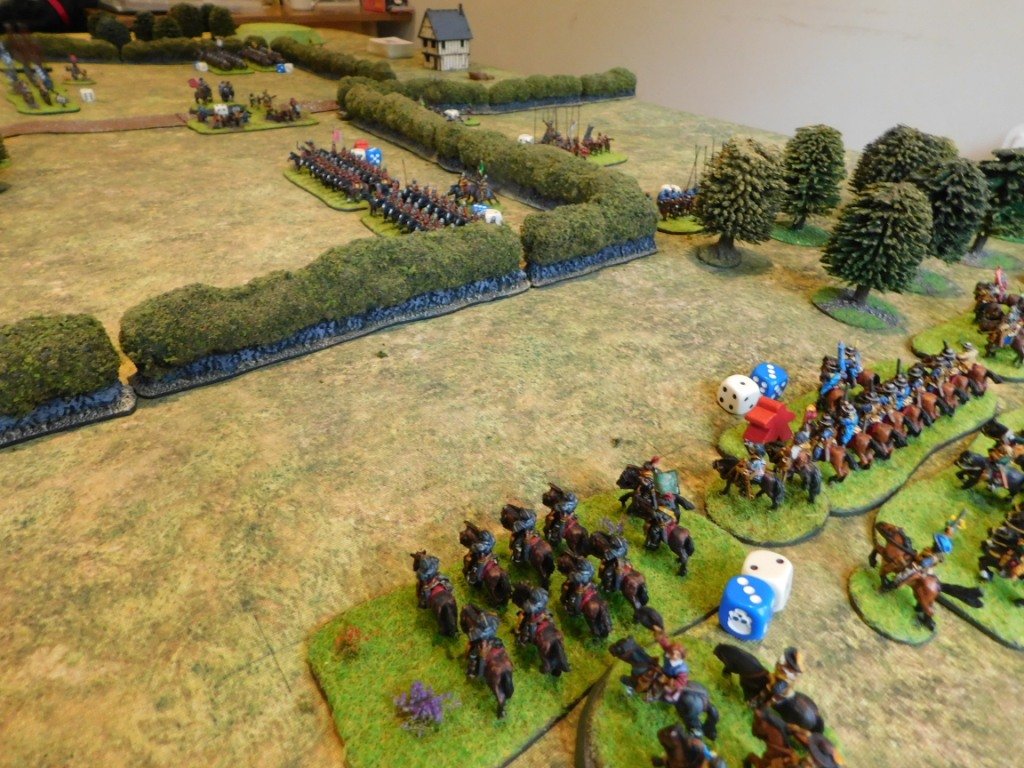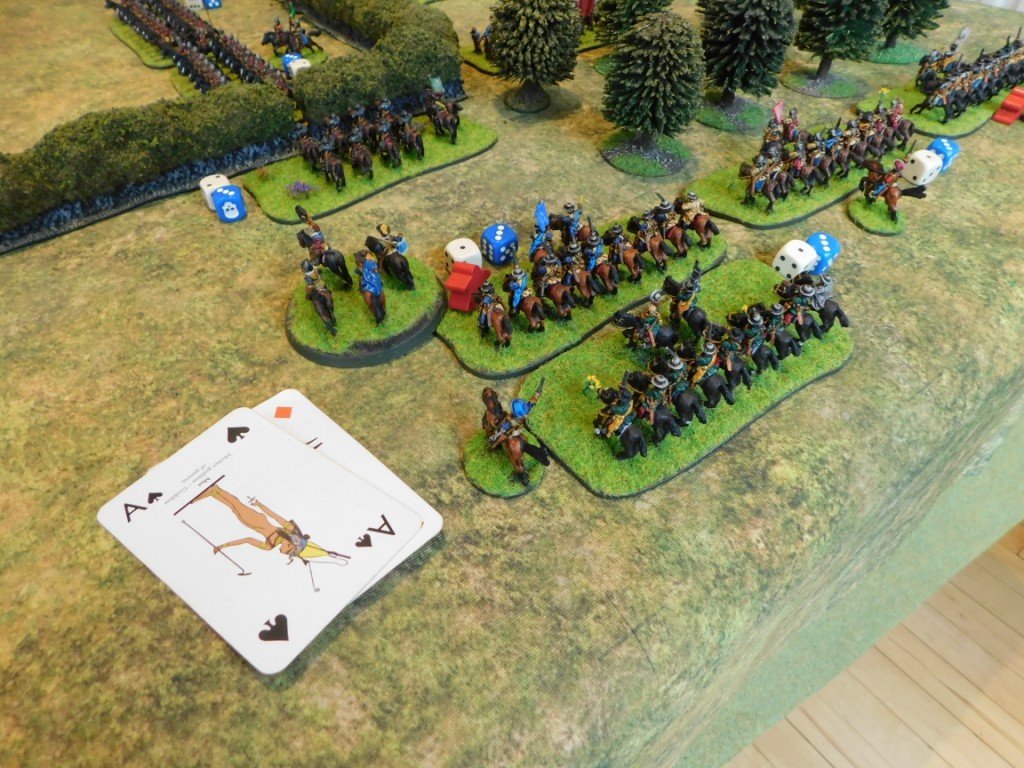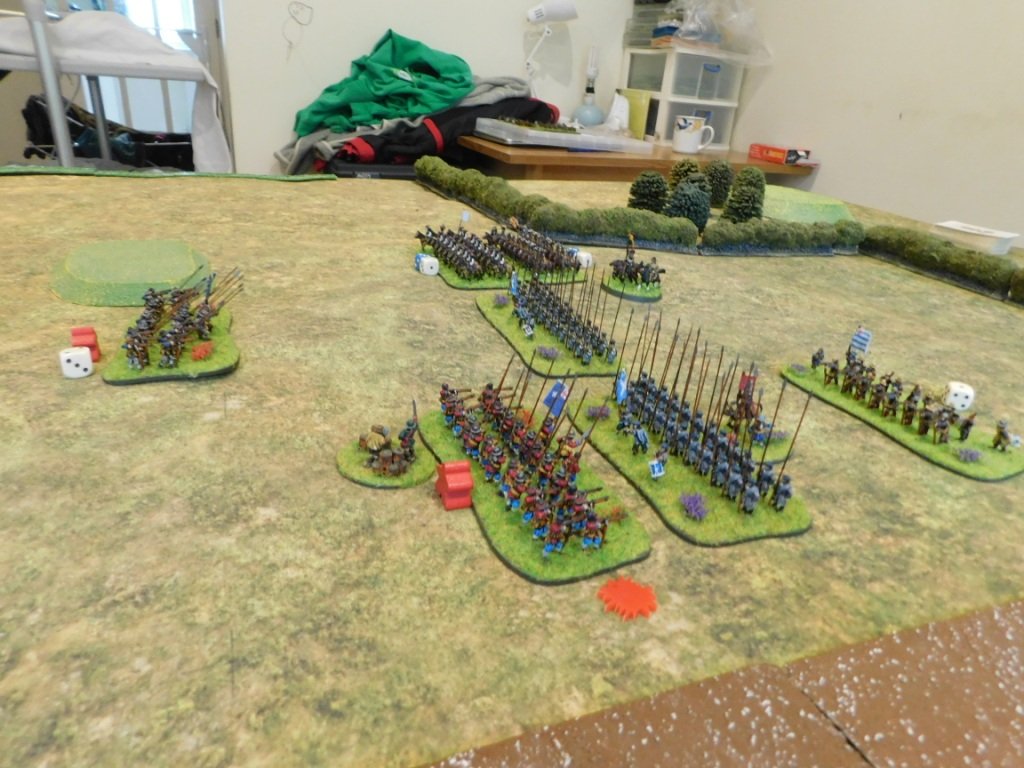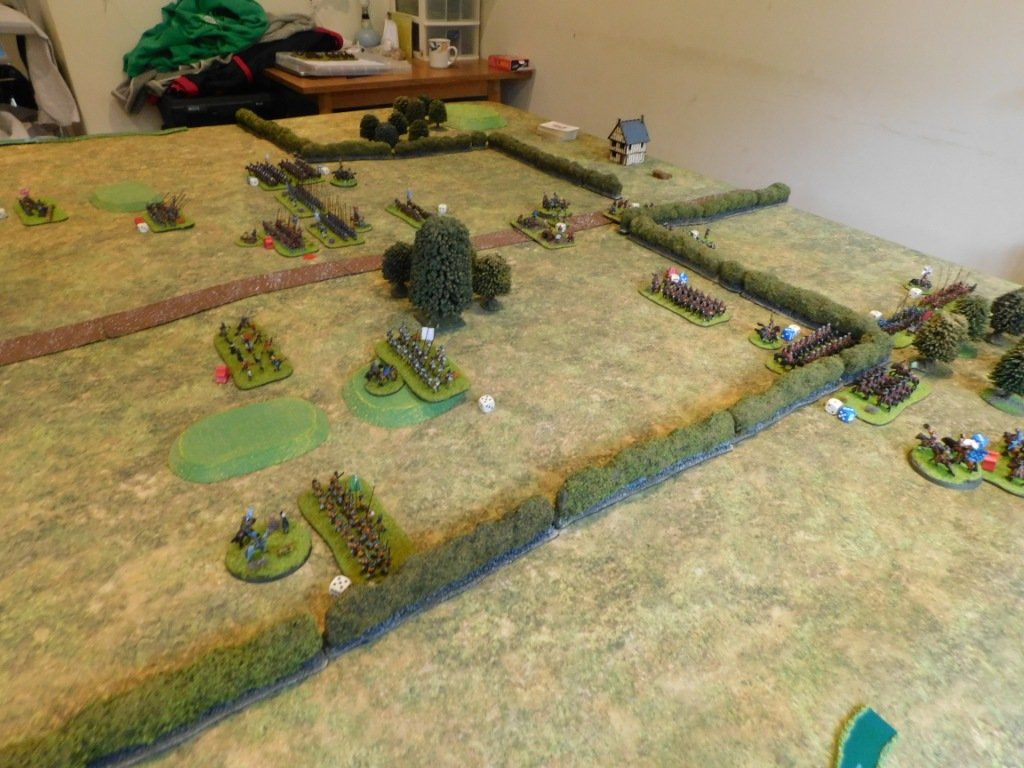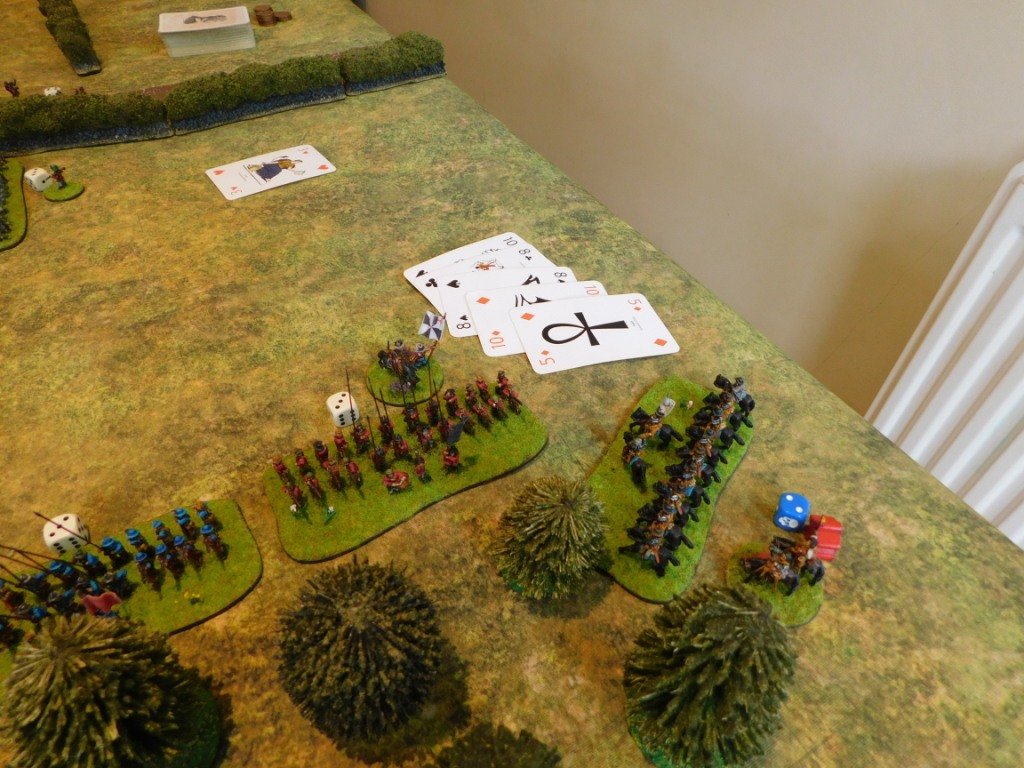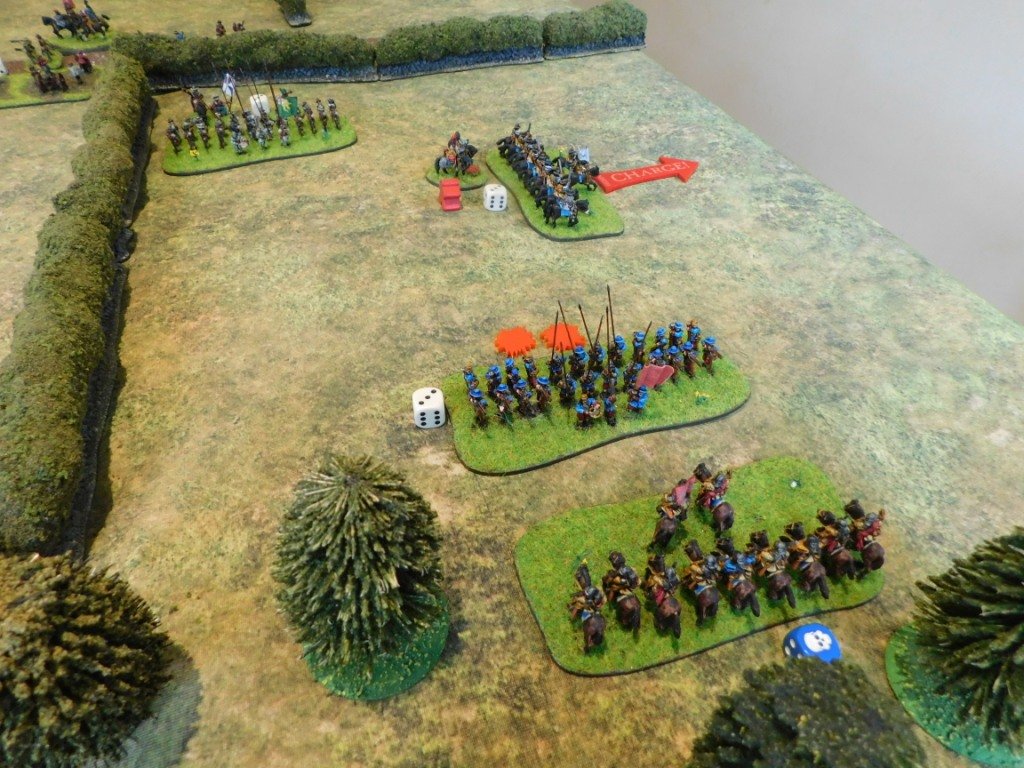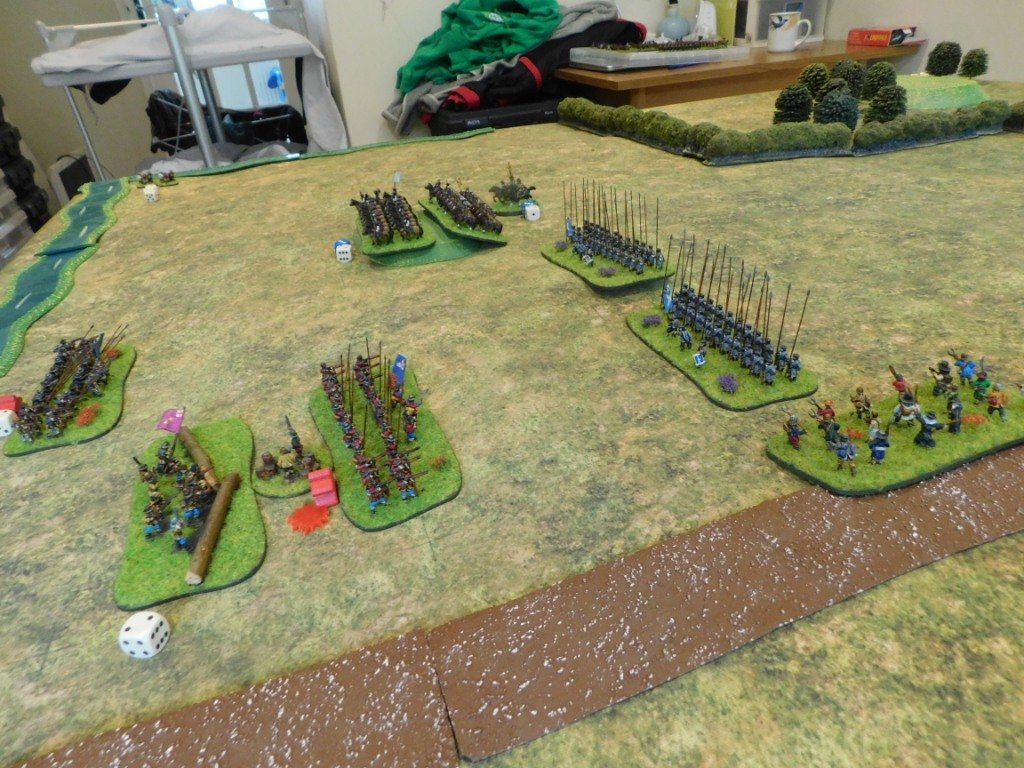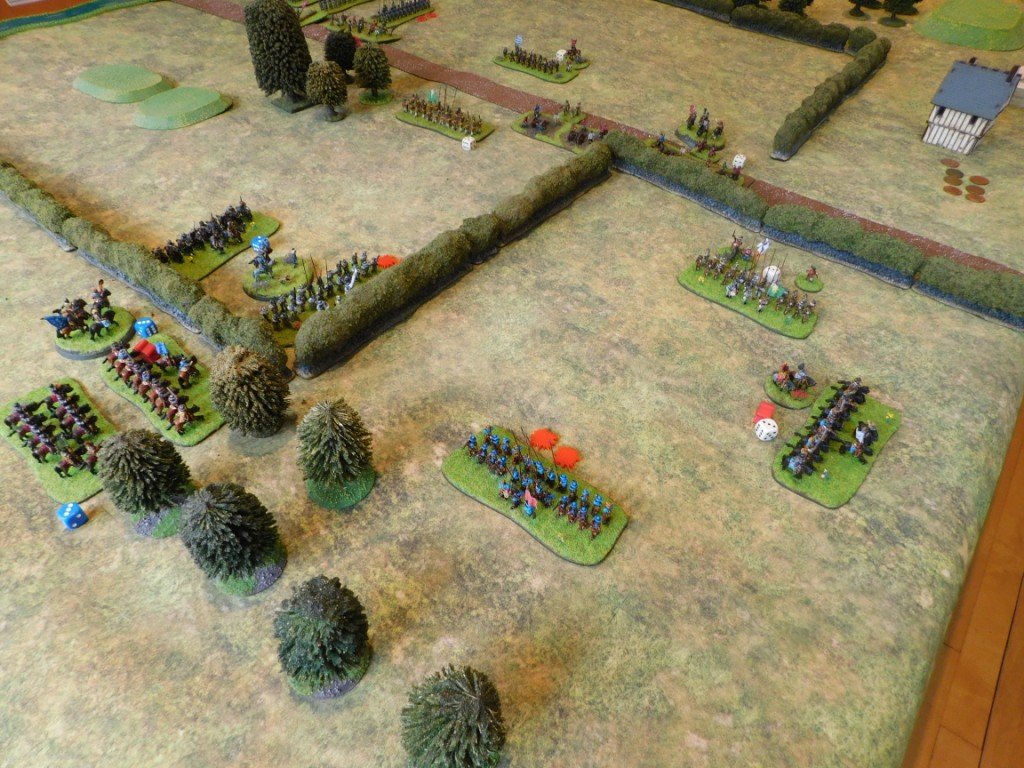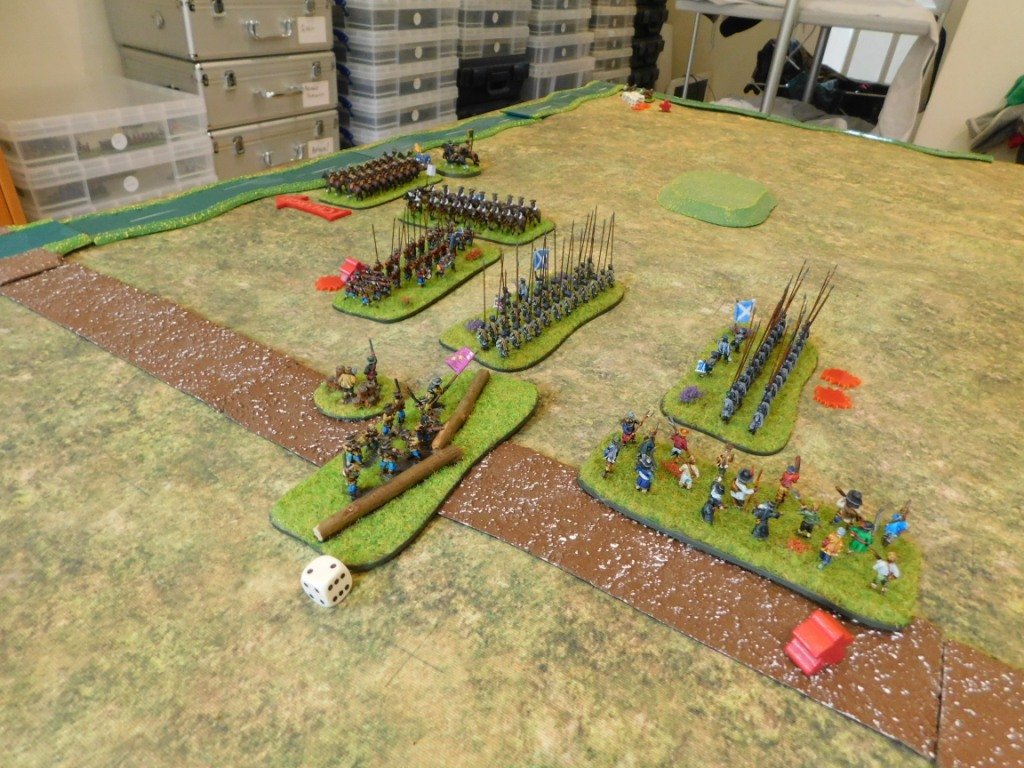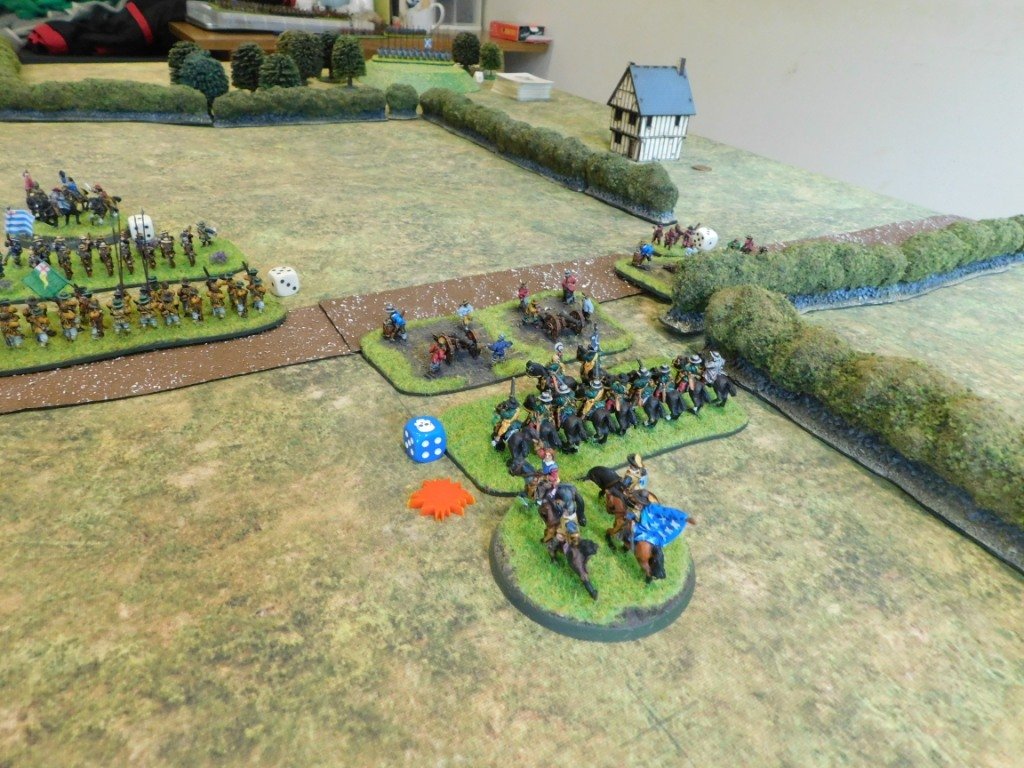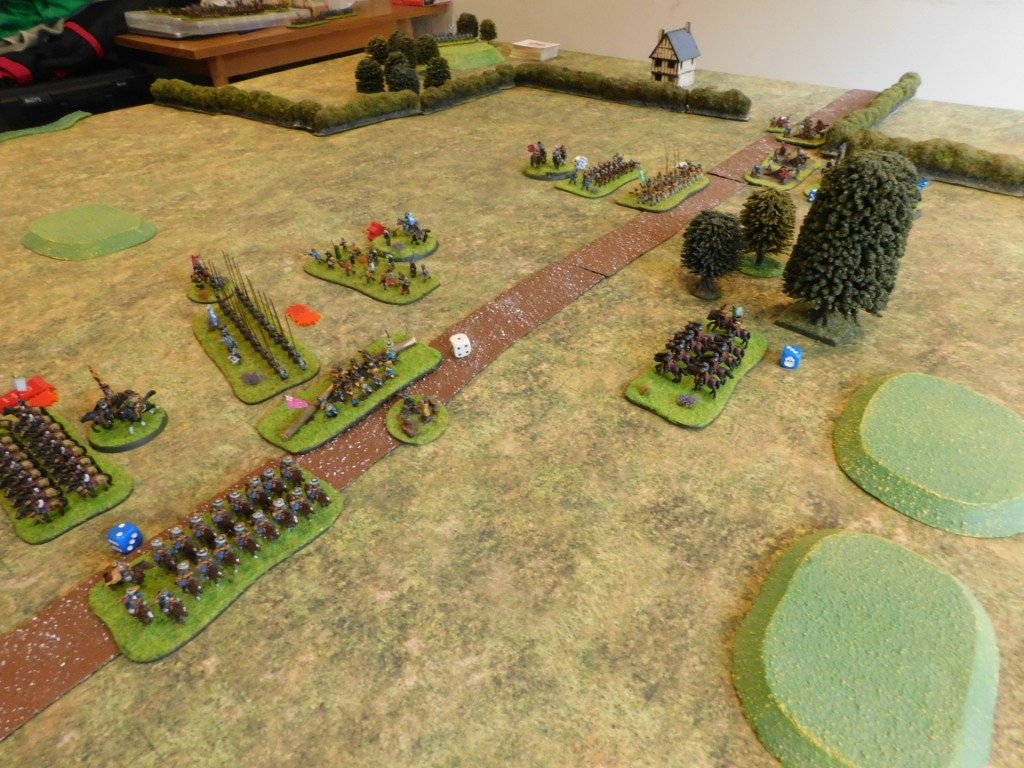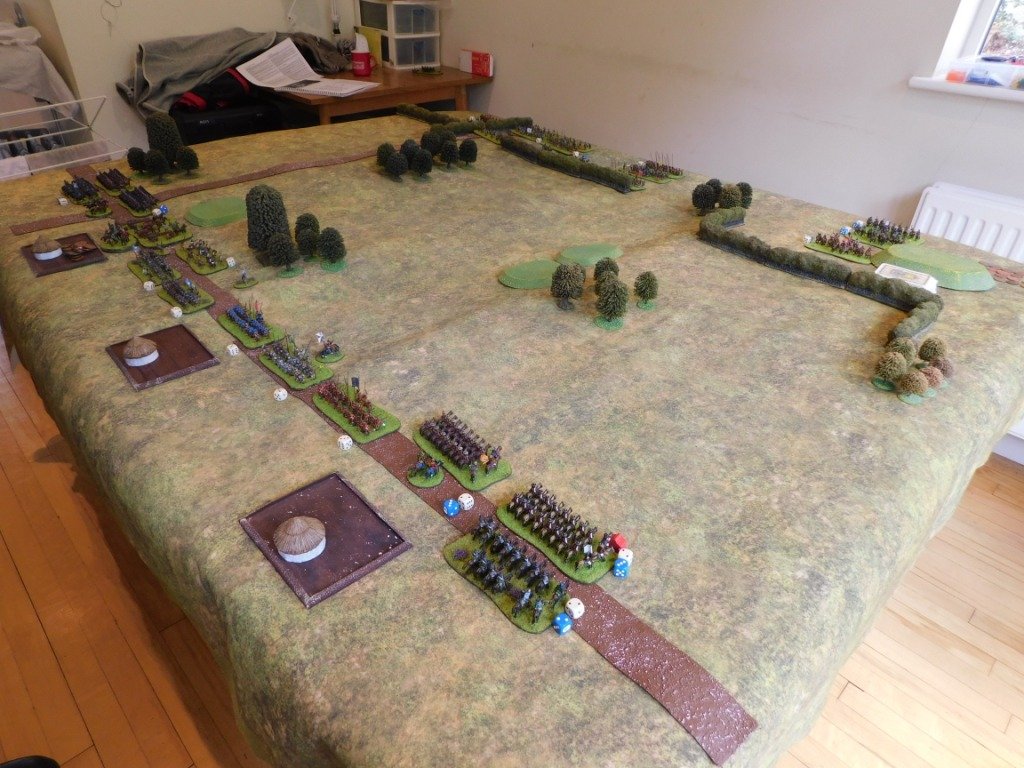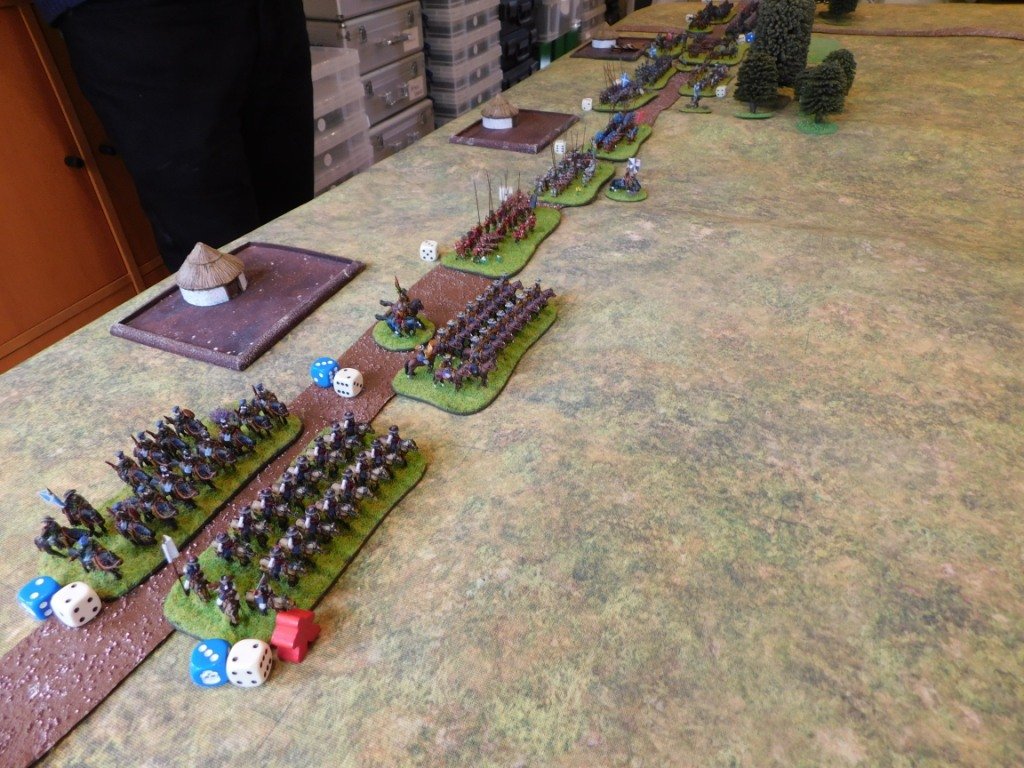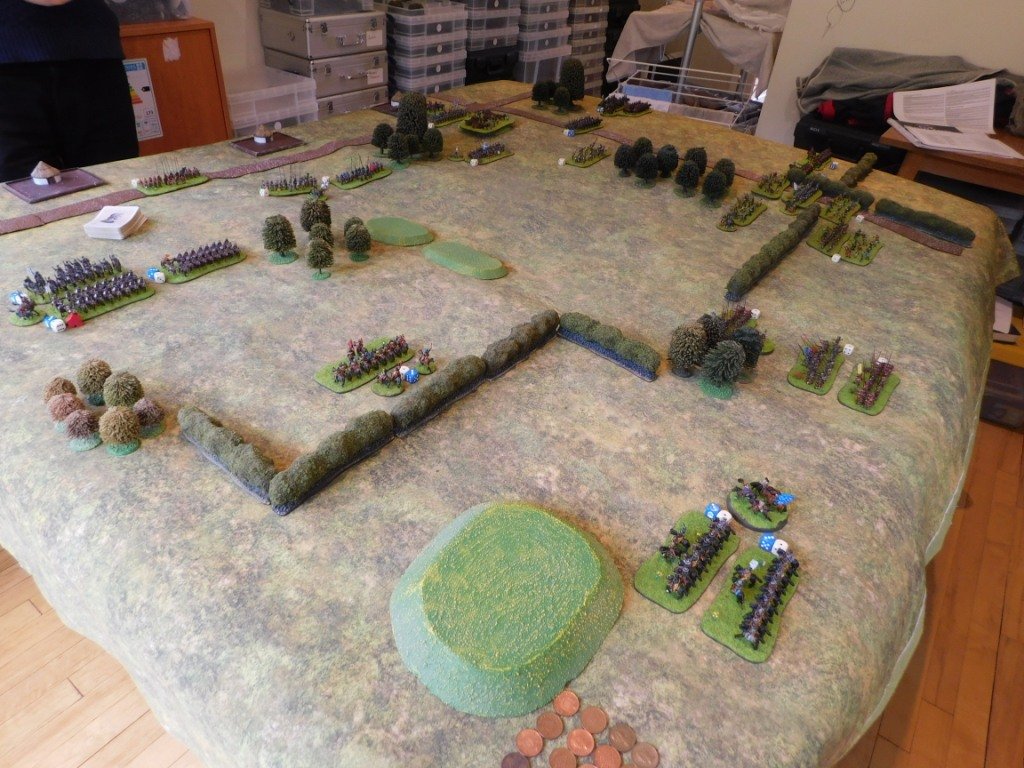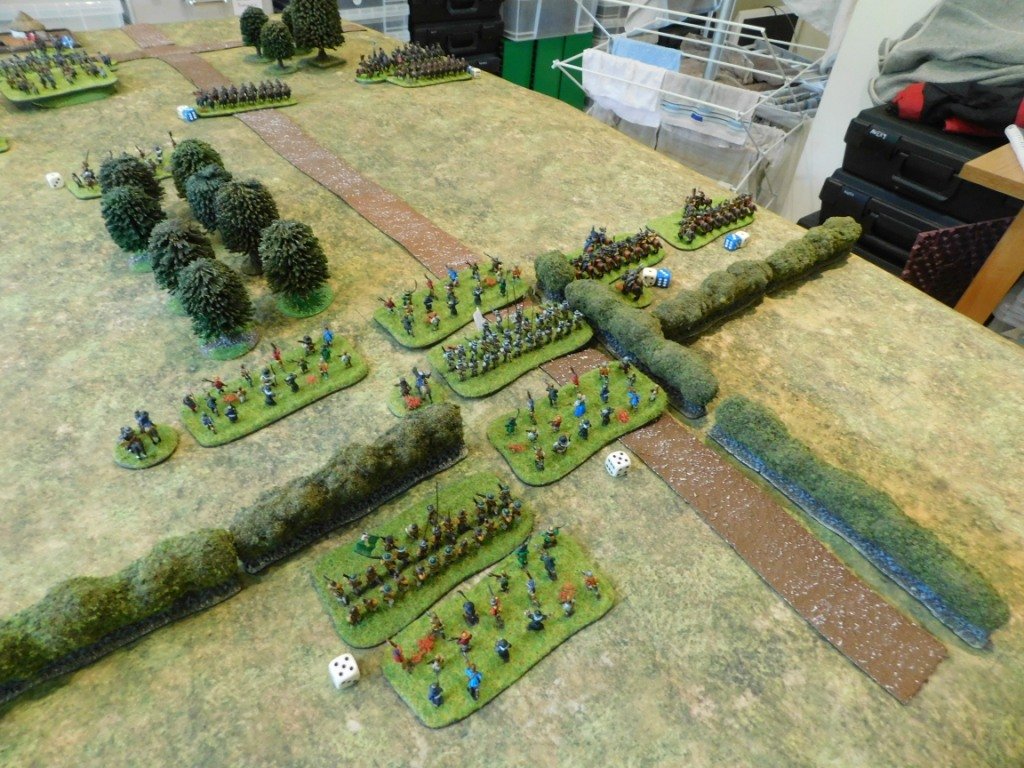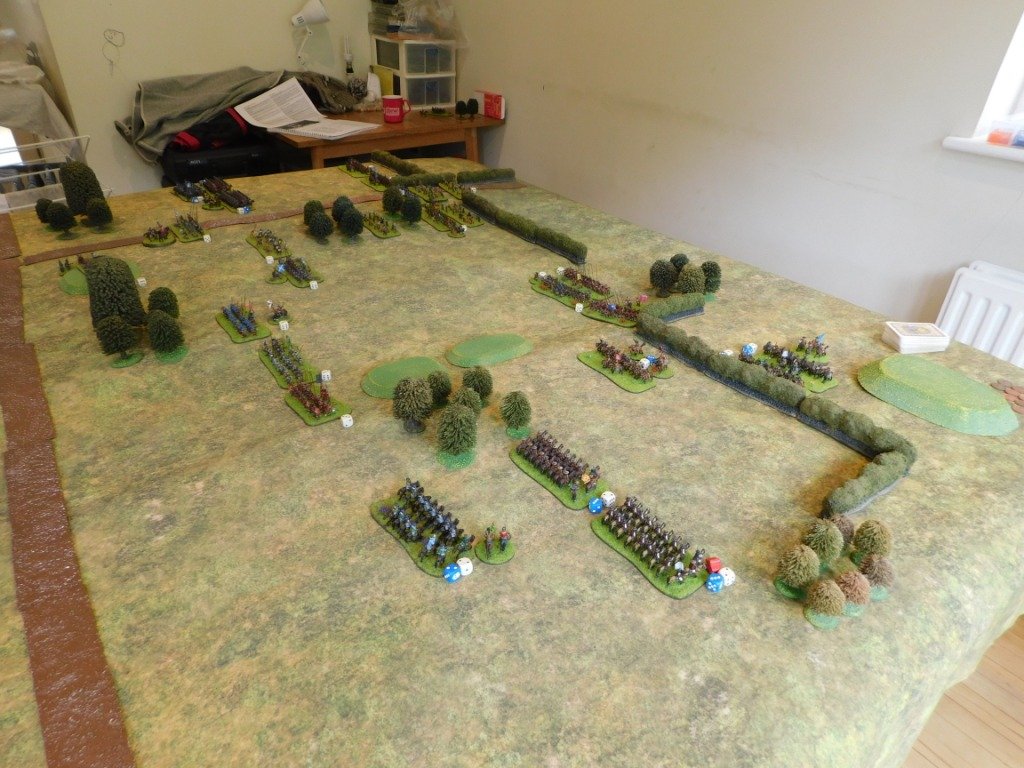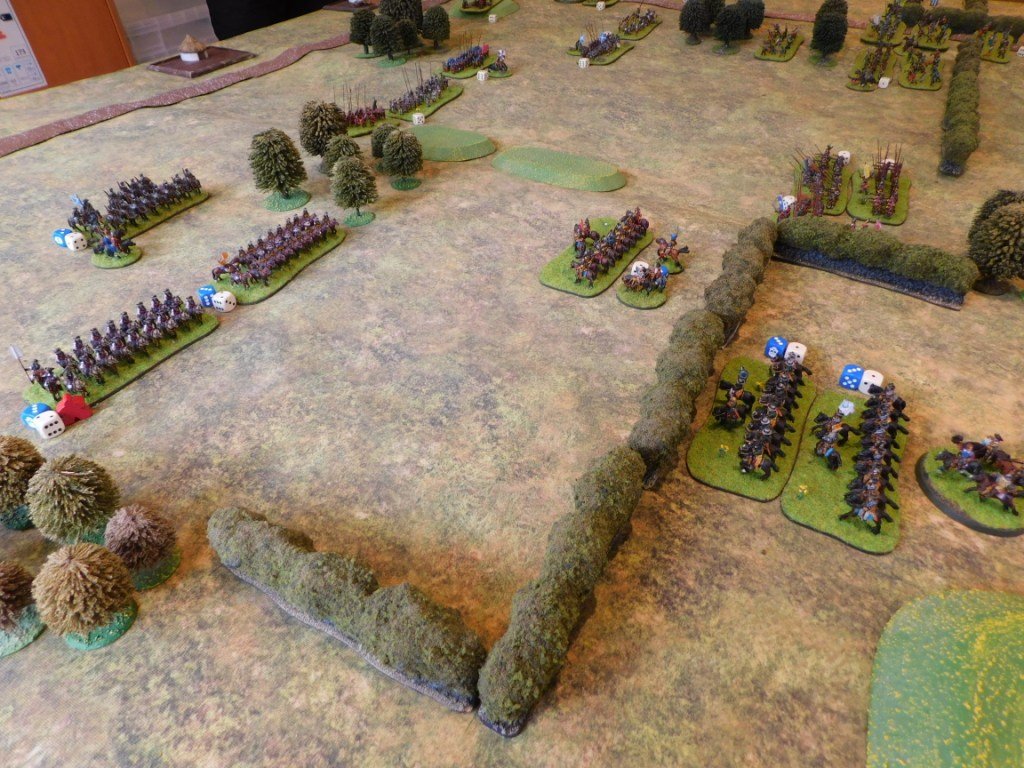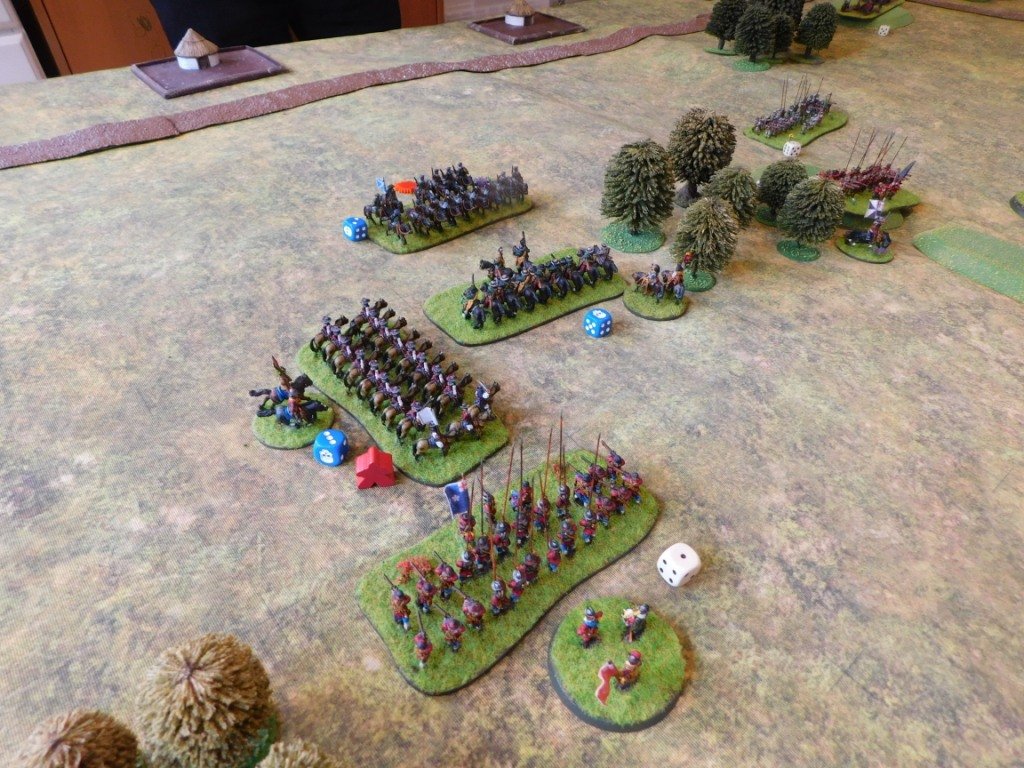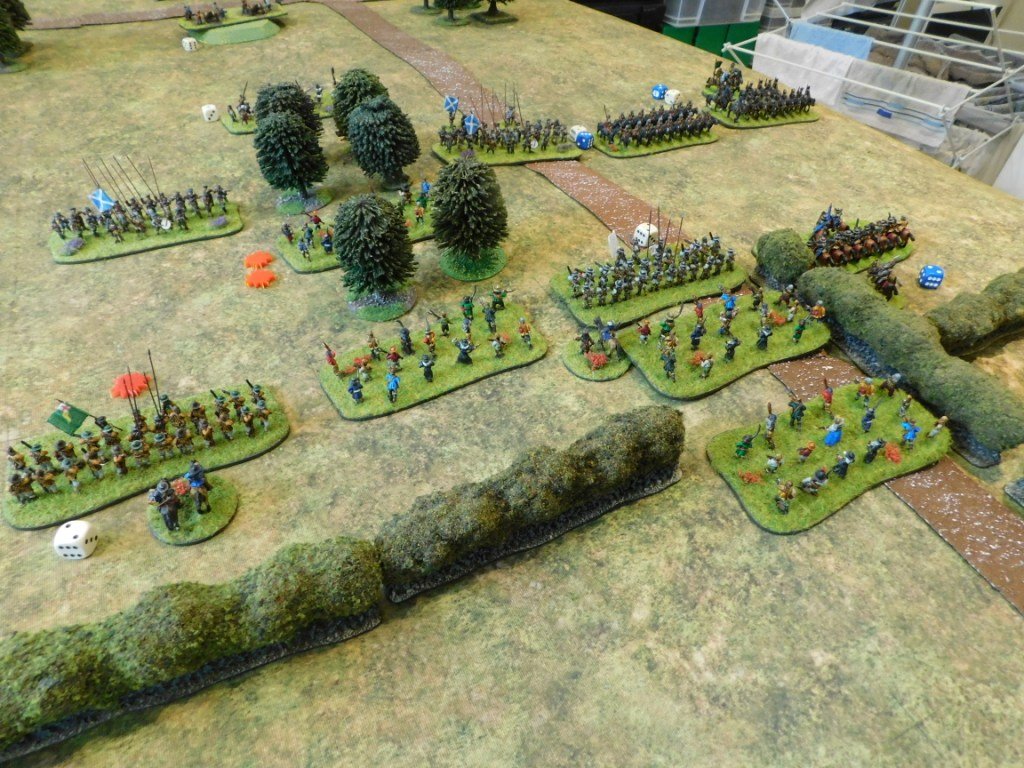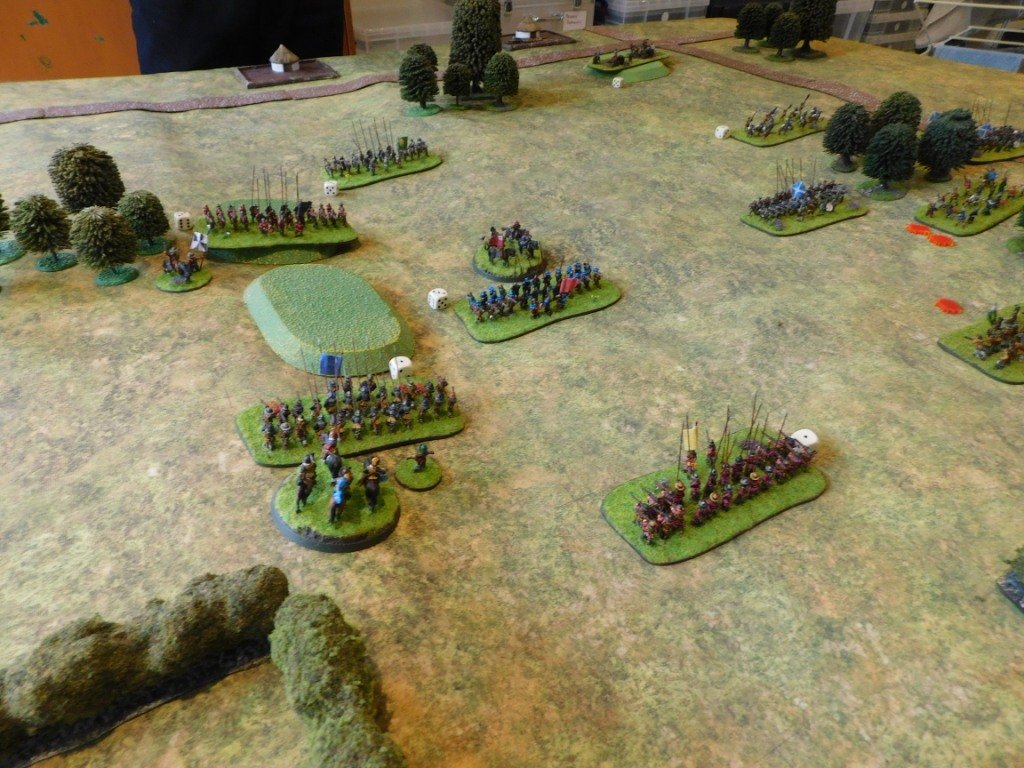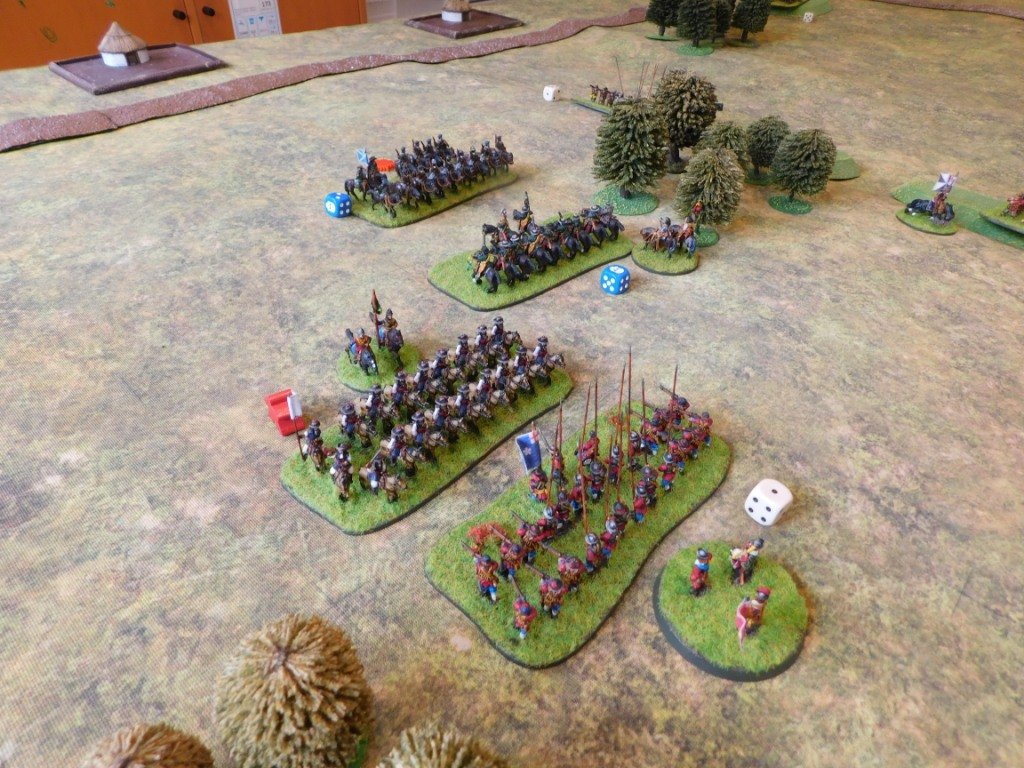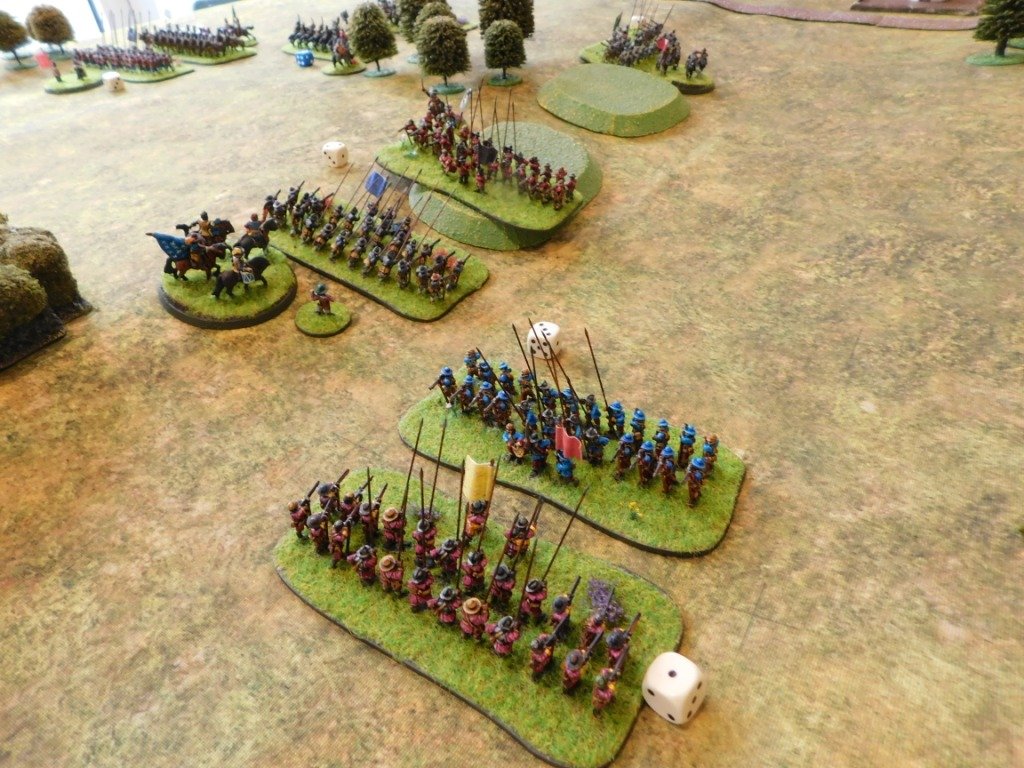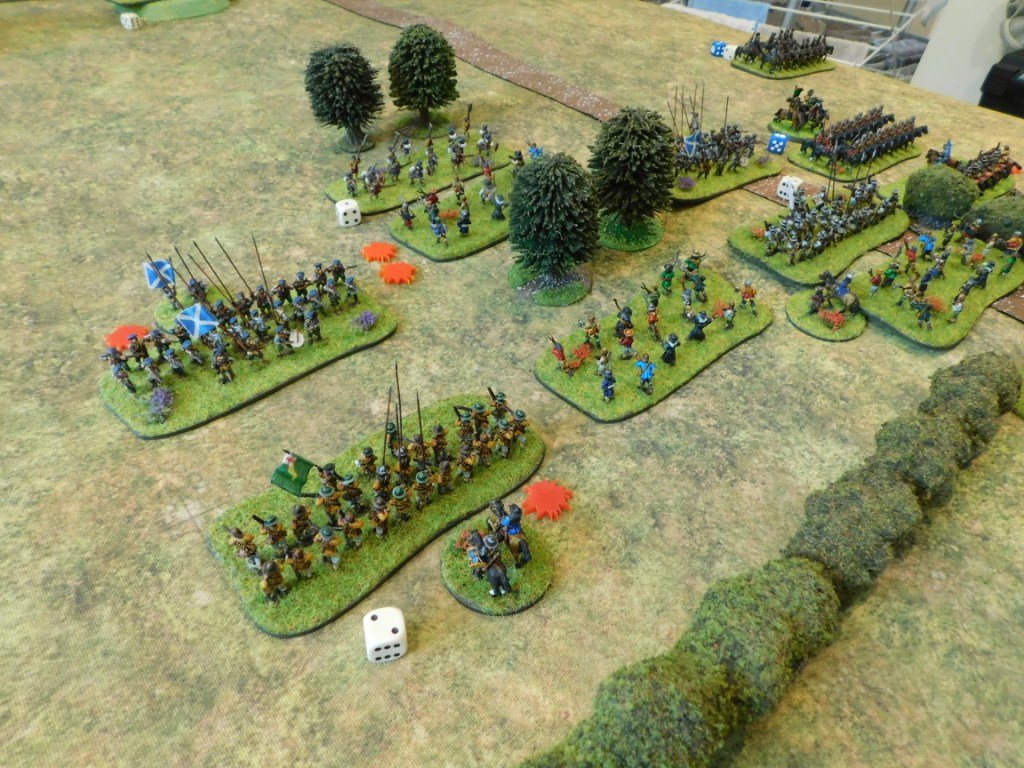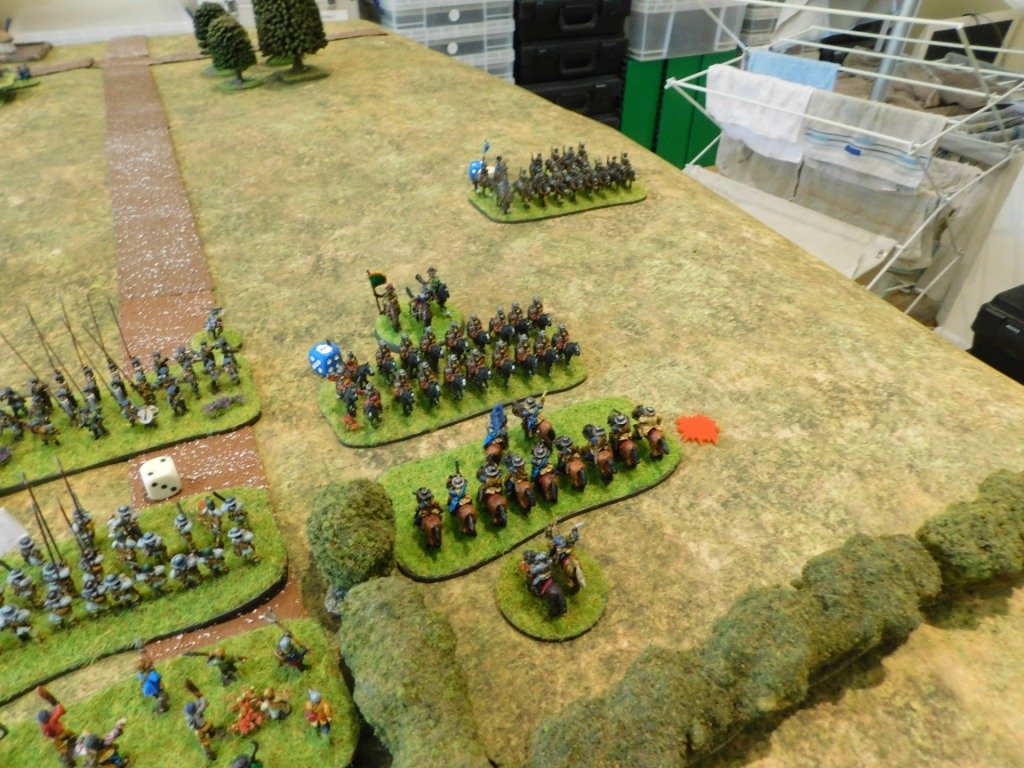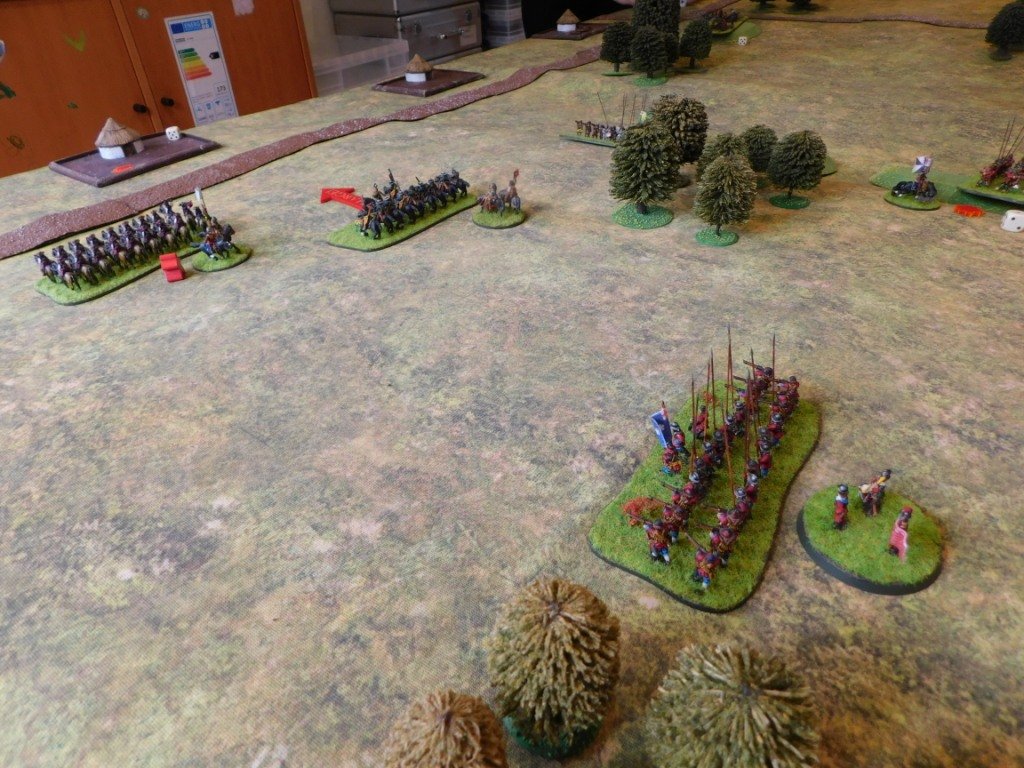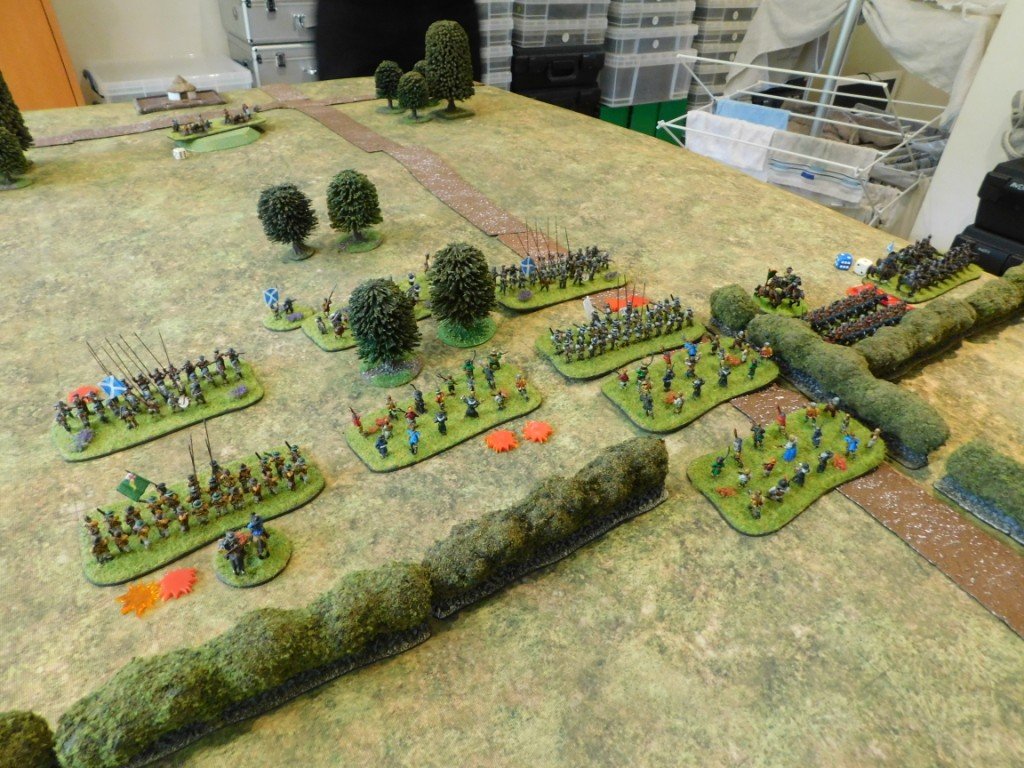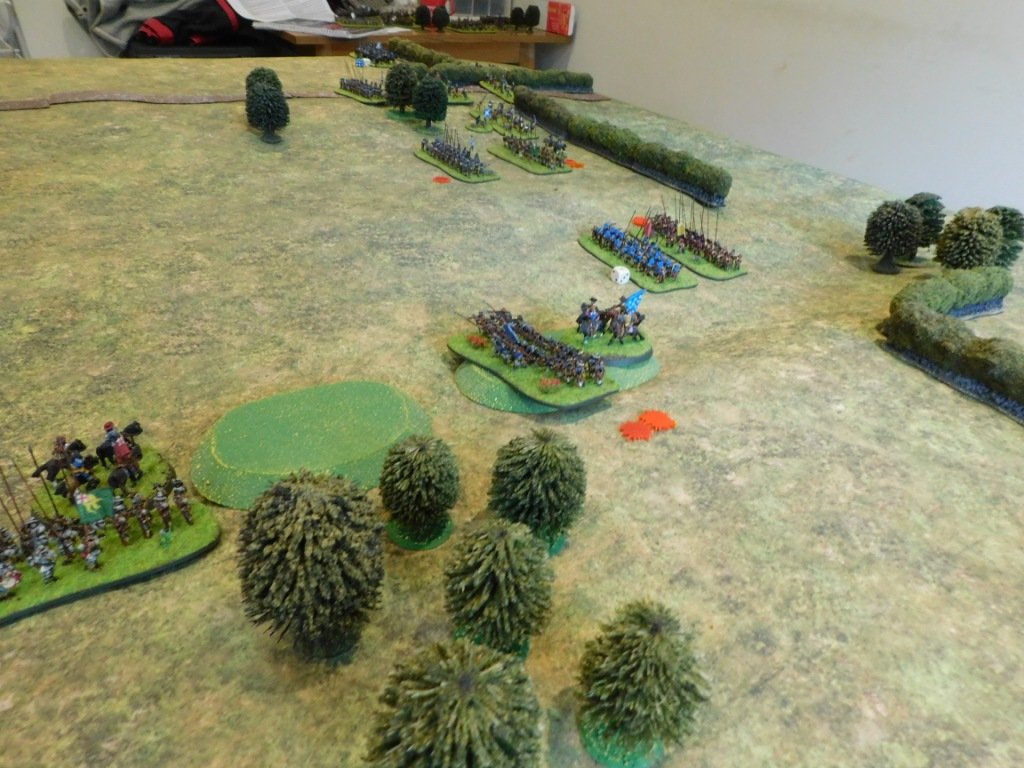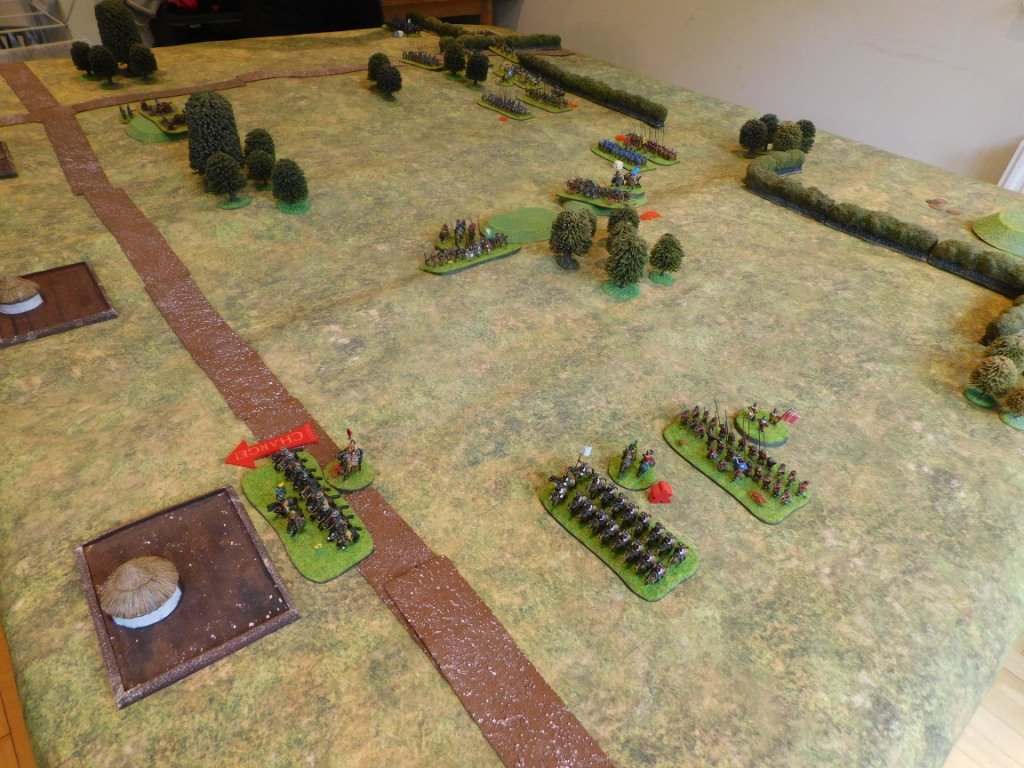FK&P AAR: Cossacks & Transylvanians versus Muscovites
/After the Cossacks got so badly hammered last time out against a Muscovite army, it was time to reinforce them with some Transylvanians: the Cossacks would provide the war wagons and foot, the Transylvanians some fairly decent cavalry.
The Muscovites were, again, mostly Sons of Boyars or Reiter cavalry supported by two small brigades of infantry.
View from behind the Muscovite line
Muscovites
Transylvanians & Cossacks
Muscovite Reiters
Elite Transylvanian Cavalry
As the battle began, both sides advanced forward smartly, with the terrain meaning that the game divided into three sectors: my left flank, the centre and my right flank.
On My Left
On my left, some scummy looking Border Guards had appeared in front of me: the perfect target for the Transylvanians!
Apparently not, as rather than running over them like a badly dressed speedbump, my horsemen got impaled on their pikes. This flank then turned into an uneasy stalemate as horse and foot units milled around charging each other with little effect. The battle would be decided elsewhere!
On the Right Flank
On my right flank, I had some Transylvanian Enlisted Light Cavalry supported by two Haiduk units sheltering in the woods.
The plan was to send the light cavalry forward to soften up the three units of Reiters coming towards me so that the Haiduks could wipe them out from safe amongst the trees.
This did not work: the light horse were swept away almost immediately, and then the Haiduks were charged from the flanks and front and, despite the bonuses for being in cover, were swept away as well. The final unit of Haiduks did hold out for some turns, but eventually succumbed, leaving my centre now vulnerable to flank attacks.
Meanwhile in the Centre…
Meanwhile in the centre, the main body of Muscovite Reiters steamed towards my line: a mixed line of raw Moloitsy short-pike-and-shot and tabor war wagons.
My tabor fired valiantly away with both their light guns and musketry, but because I only had two of them rather than my usual four, I couldn’t get the concentrated fire I needed to halt the enemy Reiters heading towards me.
The Moloitsy were charged and gave way, leaving the tabor as islands of resistance amongst a swirling sea of Muscovite horsemen.
By this stage, I was also getting very short of victory medals…
The End
As my right wing collapsed, the loss of one unit too many caused my army as a whole to collapse: the Muscovites had won the day!
This wasn’t a hammering, I hasten to add: the Muscovites had been losing units as well, but it the Cossacks and Transylvanians who crumbled first!
Another great game, through, even if the Muscovites are currently proving unstoppable!



























